International School of Crystallography - Erice
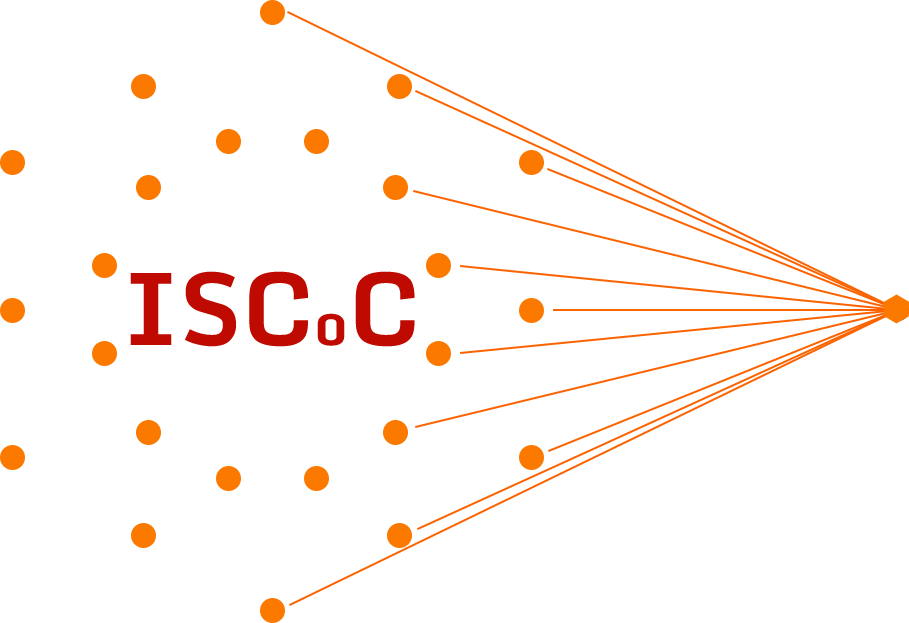
Ettore Majorana Foundation and Centre for Scientific Culture
President: Professor Antonino Zichichi
INTERNATIONAL SCHOOL of CRYSTALLOGRAPHY
Director: Sir Tom Blundell, FRS FMedSci
Cookies help us deliver our Services. By using our Services or clicking I agree, you agree to our use of cookies.
I agree cookie policy
Ettore Majorana Foundation and Centre for Scientific Culture
President: Professor Antonino Zichichi
Director: Sir Tom Blundell, FRS FMedSci
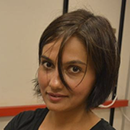
University of Utah, Salt Lake City (UT), US
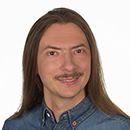
European Laboratory for Non-Linear Spectroscopy (LENS), Florence, IT
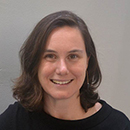
Australian Centre for Neutron Scattering (ANSTO), Sydney, AU
Subjecting matter to extreme conditions reveals a multitude of fascinating phenomena, and is applicable to a wide range of disciplines. From the extremophiles that exist in the deepest depths of our oceans to the exotic new materials that are made when atoms are pushed ever closer together, understanding the structure of materials at extreme conditions affects Biology, Chemistry, Physics, Geoscience and Material Science. In order to achieve its goals, high pressure research has been always at the vanguard of technical progress. It is a discipline in which equipment plays a particularly important role. State-of-the-art diamond anvil cells can now achieve megabar ranges of pressure, millions of times atmospheric pressure, with this beaten by an order of magnitude in dynamic compression experiments. In this manner, scientists are able to mimic the conditions in the interiors of giant planets. Nature is even more ambitious, as in the stars petapascal pressures (the order of tens to hundreds billion atmospheres) are reached. In the laboratory, we can even create conditions of pressure, temperature and magnetic fields that are not found naturally, allowing us to complement nature to explore more exotic phases of matter.
Therefore, the course will cover broad ground in the application of extreme conditions crystallography. The topics will span from fundamentals of high-pressure single crystal and powder diffraction, to presenting the many flavors of static and dynamic compression, to reviews of sources for extreme conditions work (synchrotrons, neutrons and free electron lasers). Complementary experimental (Mössbauer spectroscopy, X-ray magnetic circular dichroism, X-ray absorption spectroscopy, inelastic scattering) and computational methods will also be discussed. Diffraction analysis on the structure of liquids, glasses and nanocrystalline materials as well as multigrain crystallography will also be introduced. The lectures will be harmonized with the related sessions of interactive tutorials, providing hands-on experience to the attendees. These workshops will be focused on basic laboratory skills and the elements of data processing software related to the high pressure
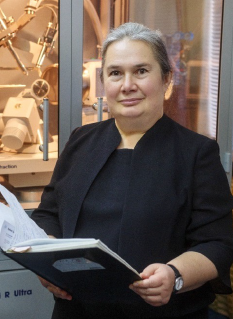 Elena Boldyreva is a professor in Solid State Chemistry at the Novosibirsk State University. She holds a PhD in Physical Chemistry and Dr. Sci. in Solid State Chemistry. She is also an honorary Dr. Sci. of the University of Edinburgh, a Corresponding Member of the Academy of Sciences and Arts of Slovenia, a fellow of the Royal Society of Chemistry and a Member of the Academia Europea. She was one of the pioneers of the high-pressure studies of organic crystals and was a co-director of the Erice School “High Pressure Crystallography: From Novel Experimental Approaches to Applications in Cutting-Edge Technologies” in 2009 (with Przemysław Dera). She published more than 300 research articles, 20 monographs and is serving as an Editor, Editorial Board member and referee in international journals. Recently she co-organized the 2021 Workshop of the IUCr Commission on High Pressure in Novosibirsk, which attracted more than 350 virtual participants.
Elena Boldyreva is a professor in Solid State Chemistry at the Novosibirsk State University. She holds a PhD in Physical Chemistry and Dr. Sci. in Solid State Chemistry. She is also an honorary Dr. Sci. of the University of Edinburgh, a Corresponding Member of the Academy of Sciences and Arts of Slovenia, a fellow of the Royal Society of Chemistry and a Member of the Academia Europea. She was one of the pioneers of the high-pressure studies of organic crystals and was a co-director of the Erice School “High Pressure Crystallography: From Novel Experimental Approaches to Applications in Cutting-Edge Technologies” in 2009 (with Przemysław Dera). She published more than 300 research articles, 20 monographs and is serving as an Editor, Editorial Board member and referee in international journals. Recently she co-organized the 2021 Workshop of the IUCr Commission on High Pressure in Novosibirsk, which attracted more than 350 virtual participants.
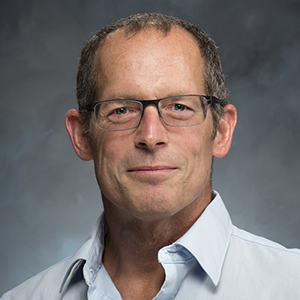 Gilbert ‘Rip’ Collins is Tracy Hyde Harris Professor of Mechanical Engineering and Physics and Astronomy, Associate Director for the Laboratory for Laser Energetics at the University of Rochester. He received his Ph.D. in Physics from Ohio State University for his work exploring low temperature transport properties of quantum fluids and solids. From 1989 to 2016 he held several positions at Lawrence Livermore National Laboratory including Group Leader, Associate Division Leader for Physics, Director for the Center for High Energy Density Physics, and Distinguished Member of the Technical Staff. Rip explores the nature and implications of matter at conditions where external forces overwhelm the quantum forces of the atom, and the microphysics of thermonuclear fusion. Relevant to this conference is his work exploring the structural complexity of matter at tens of millions of atmosphere pressure and rate limiting processes enabling transitions to such states. He is Director of the NSF Physics Frontier Center for Matter at Atomic Pressures. He holds visiting Professorships at The University of Edinburgh and Oxford University. He is recipient of the Bridgman Award, APS Fellow, APS award for Excellence in Plasma Physics, DOE Weapons Recognition of Excellence Award, NNSA Award for Excellence for Stockpile Stewardship Program, and NNSA Science and Technology Award. He was Chair of High Pressure Gordon Conference, Chair of APS Shock Compression of Condensed Matter meeting, and Chair of AIRAPT meeting.
Gilbert ‘Rip’ Collins is Tracy Hyde Harris Professor of Mechanical Engineering and Physics and Astronomy, Associate Director for the Laboratory for Laser Energetics at the University of Rochester. He received his Ph.D. in Physics from Ohio State University for his work exploring low temperature transport properties of quantum fluids and solids. From 1989 to 2016 he held several positions at Lawrence Livermore National Laboratory including Group Leader, Associate Division Leader for Physics, Director for the Center for High Energy Density Physics, and Distinguished Member of the Technical Staff. Rip explores the nature and implications of matter at conditions where external forces overwhelm the quantum forces of the atom, and the microphysics of thermonuclear fusion. Relevant to this conference is his work exploring the structural complexity of matter at tens of millions of atmosphere pressure and rate limiting processes enabling transitions to such states. He is Director of the NSF Physics Frontier Center for Matter at Atomic Pressures. He holds visiting Professorships at The University of Edinburgh and Oxford University. He is recipient of the Bridgman Award, APS Fellow, APS award for Excellence in Plasma Physics, DOE Weapons Recognition of Excellence Award, NNSA Award for Excellence for Stockpile Stewardship Program, and NNSA Science and Technology Award. He was Chair of High Pressure Gordon Conference, Chair of APS Shock Compression of Condensed Matter meeting, and Chair of AIRAPT meeting.
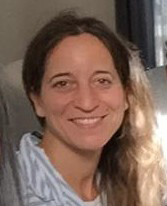 Julia Contreras received her PhD from Universidad de Oviedo (Spain) and then moved as a Fulbright-RLK fellow to Duke University. Since 2011 she is a CNRS researcher at Sorbonne University, where she holds a Directrice de Recherche position. Dr. Contreras main interest is on the development of electron density descriptors that allow to characterize chemical bond and allow predicting properties of molecules and solids. High pressure is one main application ground in solid state studies. Within this framework Contreras have focused in the prediction of properties such as the bandgap, superhardness, superconducting critical temperatures. She is currently President of the FWO Chemistry panel and Secretary of the European High Pressure Research Group. She is also very active in women in Science.
Julia Contreras received her PhD from Universidad de Oviedo (Spain) and then moved as a Fulbright-RLK fellow to Duke University. Since 2011 she is a CNRS researcher at Sorbonne University, where she holds a Directrice de Recherche position. Dr. Contreras main interest is on the development of electron density descriptors that allow to characterize chemical bond and allow predicting properties of molecules and solids. High pressure is one main application ground in solid state studies. Within this framework Contreras have focused in the prediction of properties such as the bandgap, superhardness, superconducting critical temperatures. She is currently President of the FWO Chemistry panel and Secretary of the European High Pressure Research Group. She is also very active in women in Science.
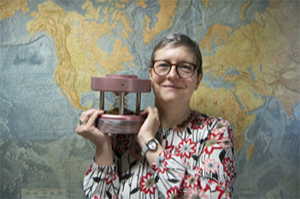 Isabelle Daniel is Professor of Geology and chair of the Observatory of Earth and planetary sciences and astrophysics at the Université Claude Bernard Lyon 1. She obtained a PhD from the same institution on the spectroscopic properties of glasses and melts. Professor Daniel’s current research program is based on the experimental investigation of mineral interactions with fluids under extreme conditions to: (i) characterize the forms of carbon deep in subduction zones in conditions inhospitable for life but that could be used as an energy source by the deep subsurface biosphere, and (ii) evaluate microbial metabolic activities beyond observations in order to (iii) evaluate the habitability of the subsurface of the Earth and other planetary bodies and the conditions of the emergence of Life on Earth and potentially elsewhere. Her favorite investigation methods are Raman, infrared and X-ray spectroscopy as well as X-ray diffraction often at synchrotron facilities.
Professor Daniel has chaired or co-chaired many conferences and workshops around the world. She has served as a member of French and international committees; she contributed to multiple aspects of the interdisciplinary research program Deep Carbon Observatory (2009-2019). She is vice-president of the European Mineralogical Union since 2016 and associate editor of Frontiers in Earth Science. Prof Daniel has recently been recognized among the 10 most influential Earth scientists by Academic Influence for her contribution to the field over the last decade.
Isabelle Daniel is Professor of Geology and chair of the Observatory of Earth and planetary sciences and astrophysics at the Université Claude Bernard Lyon 1. She obtained a PhD from the same institution on the spectroscopic properties of glasses and melts. Professor Daniel’s current research program is based on the experimental investigation of mineral interactions with fluids under extreme conditions to: (i) characterize the forms of carbon deep in subduction zones in conditions inhospitable for life but that could be used as an energy source by the deep subsurface biosphere, and (ii) evaluate microbial metabolic activities beyond observations in order to (iii) evaluate the habitability of the subsurface of the Earth and other planetary bodies and the conditions of the emergence of Life on Earth and potentially elsewhere. Her favorite investigation methods are Raman, infrared and X-ray spectroscopy as well as X-ray diffraction often at synchrotron facilities.
Professor Daniel has chaired or co-chaired many conferences and workshops around the world. She has served as a member of French and international committees; she contributed to multiple aspects of the interdisciplinary research program Deep Carbon Observatory (2009-2019). She is vice-president of the European Mineralogical Union since 2016 and associate editor of Frontiers in Earth Science. Prof Daniel has recently been recognized among the 10 most influential Earth scientists by Academic Influence for her contribution to the field over the last decade.
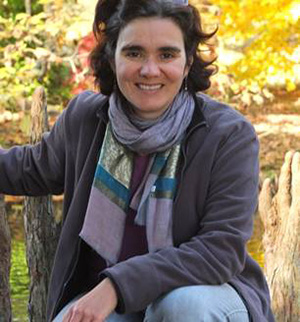 Agnès Dewaele is a staff scientist at Commissariat à l’Energie Atomique (CEA) since 2002 and a Research Professor in Université Paris Saclay since 2020. She holds a PhD in Earth Sciences from Ecole Normale Supérieure de Lyon and an habilitation thesis in Condensed Matter Physics from Sorbonne Université. She likes materials under extreme compression and uses synchrotron X-ray techniques to measure their phase, equation of state, electronic properties, microstructure... under various pressure and temperature conditions. She published more than 60 research articles and is serving as referee in international journals and as a synchrotron peer review member.
Agnès Dewaele is a staff scientist at Commissariat à l’Energie Atomique (CEA) since 2002 and a Research Professor in Université Paris Saclay since 2020. She holds a PhD in Earth Sciences from Ecole Normale Supérieure de Lyon and an habilitation thesis in Condensed Matter Physics from Sorbonne Université. She likes materials under extreme compression and uses synchrotron X-ray techniques to measure their phase, equation of state, electronic properties, microstructure... under various pressure and temperature conditions. She published more than 60 research articles and is serving as referee in international journals and as a synchrotron peer review member.
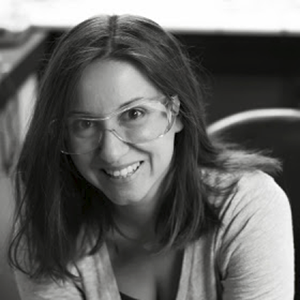 Audrey Grockowiak obtained her PhD in Condensed Matter Physics at the Néel Institute in Grenoble (France) in 2012, working on the superconductivity of heavily doped silicon. She became a Postdoctoral Associate in 2013, then Visiting Research Faculty in 2016 at the National High Magnetic Field Laboratory, working with Stan Tozer on extreme conditions experiments at high magnetic fields (static and pulsed), high pressure and low and high temperatures. Her research interests are the investigation of unconventional superconductors looking at the Fermi Surface of their normal state via Quantum Oscillation measurements, and more recently ‘hot’ superhydride superconductors. Her taste for instrumentation development, in particular the combination of several experimental techniques within one pressure cell, led her to the Extreme Conditions Beamline EMA of the Brazilian Synchrotron Sirius, where she is a staff member since January 2021.
Audrey Grockowiak obtained her PhD in Condensed Matter Physics at the Néel Institute in Grenoble (France) in 2012, working on the superconductivity of heavily doped silicon. She became a Postdoctoral Associate in 2013, then Visiting Research Faculty in 2016 at the National High Magnetic Field Laboratory, working with Stan Tozer on extreme conditions experiments at high magnetic fields (static and pulsed), high pressure and low and high temperatures. Her research interests are the investigation of unconventional superconductors looking at the Fermi Surface of their normal state via Quantum Oscillation measurements, and more recently ‘hot’ superhydride superconductors. Her taste for instrumentation development, in particular the combination of several experimental techniques within one pressure cell, led her to the Extreme Conditions Beamline EMA of the Brazilian Synchrotron Sirius, where she is a staff member since January 2021.
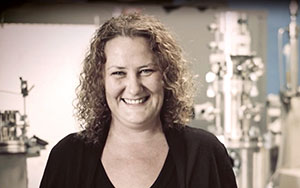 Bianca Haberl started her research career at the Australian National University in Canberra, Australia, where she obtained her PhD in 2011 and remained as postdoctoral associate for three more years. In 2014, she joined the Neutron Sciences Directorate of Oak Ridge National Laboratory (ORNL) in Tennessee, USA, as a Weinberg Fellow. She has since remained there as permanent R&D staff with a focus on high pressure science. Specifically, she oversees high pressure activities at both of ORNL’s neutron sources, the Spallation Neutron Source and the High Flux Isotope Reactor, she develops and deploys high pressure neutron technology and furthers high pressure science activities amongst ORNL’s staff and neutron users. She also maintains an active research program focused on the high pressure behavior and synthesis of Group IVa materials for energy and other semiconductor applications.
Bianca Haberl started her research career at the Australian National University in Canberra, Australia, where she obtained her PhD in 2011 and remained as postdoctoral associate for three more years. In 2014, she joined the Neutron Sciences Directorate of Oak Ridge National Laboratory (ORNL) in Tennessee, USA, as a Weinberg Fellow. She has since remained there as permanent R&D staff with a focus on high pressure science. Specifically, she oversees high pressure activities at both of ORNL’s neutron sources, the Spallation Neutron Source and the High Flux Isotope Reactor, she develops and deploys high pressure neutron technology and furthers high pressure science activities amongst ORNL’s staff and neutron users. She also maintains an active research program focused on the high pressure behavior and synthesis of Group IVa materials for energy and other semiconductor applications.
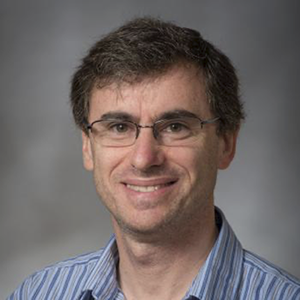 Daniel Haskel is Group Leader of the Magnetic Materials Group of the Advanced Photon Source and Senior Scientist at Argonne National Laboratory. He received a Ph.D. in Physics from the University of Washington in 1998. His doctoral thesis focused on local structure measurements of high temperature superconductors using synchrotron-based x-ray absorption fine structure (XAFS) measurements. As a postdoc in the newly built Advanced Photon Source (1999-2001), he exploited the polarization dependence of x-ray scattering and absorption to probe magnetization depth profiles and non-collinear magnetic structures in artificial magnetic multilayers. As a beamline scientist (2001-2012) he developed a number of x-ray techniques and instrumentation for polarization dependent studies of magnetic materials, including new programs for x-ray magnetic circular dichroism and resonant magnetic scattering at high pressures. As Group Leader (2012-Present) he oversees the development and operations of five x-ray spectroscopy and scattering beamlines at the Advanced Photon Source as well as planning for a new beamline “Polar” to come online in 2024. Polar will provide unique tools for studies of magnetic and electronic materials, particularly under extreme pressures. He is an elected fellow of the American Physical Society (Condensed Matter Physics Division, 2015) and was named one of the 2021 Outstanding Referees by the same society. He is an Adjunct Professor in the Physics department of Washington University in St. Louis and a Fellow in the Northwestern-Argonne Institute of Science and Engineering. He is an Associate Editor in Functional Materials (Quantum Materials section) and Editorial Board Member for Scientific Reports.
Daniel Haskel is Group Leader of the Magnetic Materials Group of the Advanced Photon Source and Senior Scientist at Argonne National Laboratory. He received a Ph.D. in Physics from the University of Washington in 1998. His doctoral thesis focused on local structure measurements of high temperature superconductors using synchrotron-based x-ray absorption fine structure (XAFS) measurements. As a postdoc in the newly built Advanced Photon Source (1999-2001), he exploited the polarization dependence of x-ray scattering and absorption to probe magnetization depth profiles and non-collinear magnetic structures in artificial magnetic multilayers. As a beamline scientist (2001-2012) he developed a number of x-ray techniques and instrumentation for polarization dependent studies of magnetic materials, including new programs for x-ray magnetic circular dichroism and resonant magnetic scattering at high pressures. As Group Leader (2012-Present) he oversees the development and operations of five x-ray spectroscopy and scattering beamlines at the Advanced Photon Source as well as planning for a new beamline “Polar” to come online in 2024. Polar will provide unique tools for studies of magnetic and electronic materials, particularly under extreme pressures. He is an elected fellow of the American Physical Society (Condensed Matter Physics Division, 2015) and was named one of the 2021 Outstanding Referees by the same society. He is an Adjunct Professor in the Physics department of Washington University in St. Louis and a Fellow in the Northwestern-Argonne Institute of Science and Engineering. He is an Associate Editor in Functional Materials (Quantum Materials section) and Editorial Board Member for Scientific Reports.
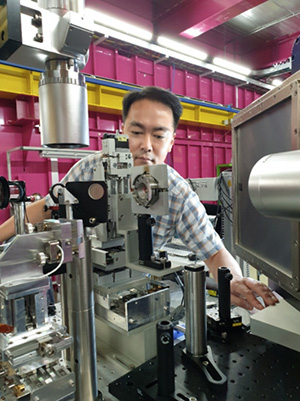 Yongjae Lee is a professor at the Department of Earth System Sciences, Yonsei University in Seoul, Korea. With Ph.D. in crystallography from Stony Brook University in 2001, he discovered a “super-hydrated zeolite” forming under pressure while working as a postdoctoral fellow at Brookhaven National Laboratory. Through joining Yonsei University in 2006, he continued to explore the high-pressure behaviors of porous materials to establish “super-hydration” as a controllable property in host-guest interactions. Recently, he extended “super-hydration” into global settings and reported “super-hydrated clay” forming along subduction zone conditions, which shed new insights into understanding seismicity and volcanism along the subduction zones and water transportation into the Earth. He is an active user of PLS-II and PAL-XFEL in Korea, PETRA-III and Euro-XFEL in Germany, and APS in USA. Yongjae Lee is the recipient of Alvin Van Valkenburg and Sidhu awards in 2002 and the author of more than 180 peer-reviewed research papers.
Yongjae Lee is a professor at the Department of Earth System Sciences, Yonsei University in Seoul, Korea. With Ph.D. in crystallography from Stony Brook University in 2001, he discovered a “super-hydrated zeolite” forming under pressure while working as a postdoctoral fellow at Brookhaven National Laboratory. Through joining Yonsei University in 2006, he continued to explore the high-pressure behaviors of porous materials to establish “super-hydration” as a controllable property in host-guest interactions. Recently, he extended “super-hydration” into global settings and reported “super-hydrated clay” forming along subduction zone conditions, which shed new insights into understanding seismicity and volcanism along the subduction zones and water transportation into the Earth. He is an active user of PLS-II and PAL-XFEL in Korea, PETRA-III and Euro-XFEL in Germany, and APS in USA. Yongjae Lee is the recipient of Alvin Van Valkenburg and Sidhu awards in 2002 and the author of more than 180 peer-reviewed research papers.
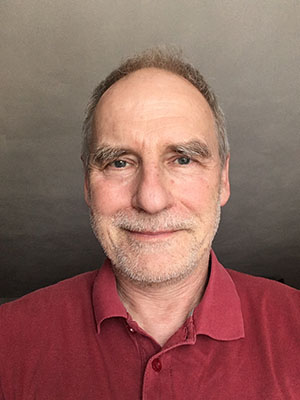 Andrzej Katrusiak: MSc 1979 in quantum electronics; PhD 1983 in crystal chemistry; Prof. since 1997; head of Materials Chemistry Department at the Adam Mickiewicz University. Co-editor of Acta Cryst. B; in Advisory Board of CrystEngComm. Interests: thermodynamics, condensed matter, diffractometry, programming, sorption, symmetry, high-pressure crystallography.
Andrzej Katrusiak: MSc 1979 in quantum electronics; PhD 1983 in crystal chemistry; Prof. since 1997; head of Materials Chemistry Department at the Adam Mickiewicz University. Co-editor of Acta Cryst. B; in Advisory Board of CrystEngComm. Interests: thermodynamics, condensed matter, diffractometry, programming, sorption, symmetry, high-pressure crystallography.
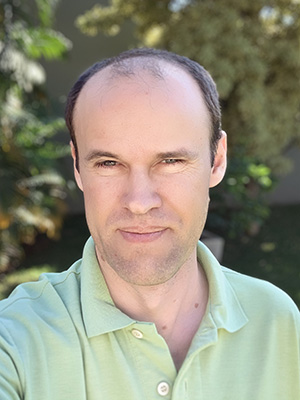 Narcizo M. Souza Neto is the Head of Condensed Matter and Materials Science Division (DMC) since 2020 at the Brazilian Synchrotron Light Laboratory in Campinas, Brazil, where he is also a scientist at since 2010. Narcizo had his first experience with synchrotron radiation in 2001 which motivated him to pursue his Masters (2003) and Ph.D. (2007) in the field. From 2007 to 2010 worked as a post-doctoral researcher at the Advanced Photon Source synchrotron in USA. In 2015 was awarded with the Dale Sayers Award from the International XAFS Society for contributions for XAS experiments under extreme conditions. This was the first time this prize was awarded to a scientist in Latin America. Today Narcizo has research interests in magnetic and superconducting materials as well as materials under extreme conditions and the developments of analysis techniques using synchrotron radiation. He has led the design and implementation of the Extreme Condition Beamline at the Sirius synchrotron source in Brazil (one of the few 4th generation sources in the world).
Narcizo M. Souza Neto is the Head of Condensed Matter and Materials Science Division (DMC) since 2020 at the Brazilian Synchrotron Light Laboratory in Campinas, Brazil, where he is also a scientist at since 2010. Narcizo had his first experience with synchrotron radiation in 2001 which motivated him to pursue his Masters (2003) and Ph.D. (2007) in the field. From 2007 to 2010 worked as a post-doctoral researcher at the Advanced Photon Source synchrotron in USA. In 2015 was awarded with the Dale Sayers Award from the International XAFS Society for contributions for XAS experiments under extreme conditions. This was the first time this prize was awarded to a scientist in Latin America. Today Narcizo has research interests in magnetic and superconducting materials as well as materials under extreme conditions and the developments of analysis techniques using synchrotron radiation. He has led the design and implementation of the Extreme Condition Beamline at the Sirius synchrotron source in Brazil (one of the few 4th generation sources in the world).
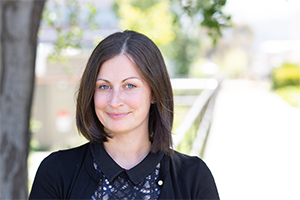 Emma McBride is a Panofsky Fellow at SLAC National Accelerator Laboratory in the High Energy Density Sciences Division. She received her PhD in 2014 from the Centre for Science at Extreme Conditions at the University of Edinburgh, following which she joined DESY, Hamburg as a Postdoctoral Researcher. In 2015 she received the Peter Paul Ewald Fellowship, with a joint position between European XFEL, Germany, and SLAC National Accelerator Laboratory, USA. In 2018 she was awarded the Panofsky Fellowship at SLAC, where she holds the position of Associate Staff. Her research mainly focuses on using X-ray diffraction, X-ray imaging, and inelastic X-ray scattering techniques at hard X-ray Free Electron lasers (XFELs) combined with high intensity pulsed laser drivers to explore the behaviour of matter at extreme conditions.
Emma McBride is a Panofsky Fellow at SLAC National Accelerator Laboratory in the High Energy Density Sciences Division. She received her PhD in 2014 from the Centre for Science at Extreme Conditions at the University of Edinburgh, following which she joined DESY, Hamburg as a Postdoctoral Researcher. In 2015 she received the Peter Paul Ewald Fellowship, with a joint position between European XFEL, Germany, and SLAC National Accelerator Laboratory, USA. In 2018 she was awarded the Panofsky Fellowship at SLAC, where she holds the position of Associate Staff. Her research mainly focuses on using X-ray diffraction, X-ray imaging, and inelastic X-ray scattering techniques at hard X-ray Free Electron lasers (XFELs) combined with high intensity pulsed laser drivers to explore the behaviour of matter at extreme conditions.
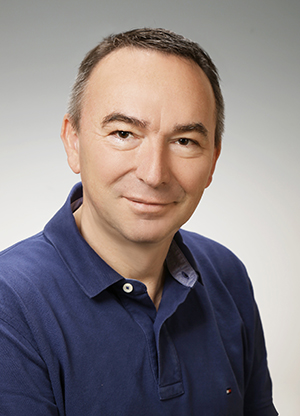 Biography
Biography
Born: 02.02.1967 Berlin (Germany)
Studies:
- 1987-1992 Mineralogy / Crystallography TU-Berlin (Germany)
- 1991-2001 PhD and Post-doc at the Institut de Cristallographie, Universite de Lausanne Switzerland
Work
- 1997-2001 Managing director of ‘Kuma Diffraction Instruments Sarl’, Lausanne Switzerland
- 2001-2008 Software manager at Oxford Diffraction (Poland) Sp. z o.o. and Board member of Oxford Diffraction Ltd.
- 2008-now Software manager at Oxford Diffraction (Poland) Sp. z o.o., Agilent (Poland) and Rigaku Oxford Diffraction (Poland) Sp. z o.o.
Private
- Married
- Twins (non-merohedral)
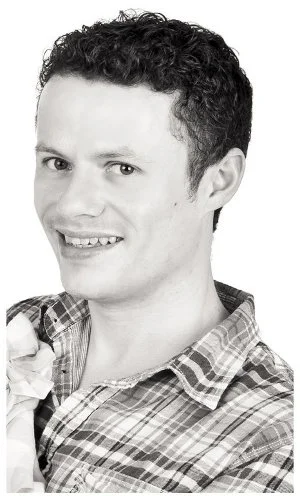 Stephen A. Moggach received his BSc degree in applied chemistry from The Robert Gordon University (2002) and his PhD in chemistry from the University of Edinburgh (2006). Stephen did his PhD then a postdoc under the supervision of Professor Simon Parsons at the University of Edinburgh in the field of high-pressure crystallography. Stephen went on to become a lecturer then senior lecturer in inorganic chemistry and Royal Society of Edinburgh Personal Research Fellow in Edinburgh before heading to the University of Western Australia, where he is now an Associate Professor in Structural Chemistry.
Stephen A. Moggach received his BSc degree in applied chemistry from The Robert Gordon University (2002) and his PhD in chemistry from the University of Edinburgh (2006). Stephen did his PhD then a postdoc under the supervision of Professor Simon Parsons at the University of Edinburgh in the field of high-pressure crystallography. Stephen went on to become a lecturer then senior lecturer in inorganic chemistry and Royal Society of Edinburgh Personal Research Fellow in Edinburgh before heading to the University of Western Australia, where he is now an Associate Professor in Structural Chemistry.
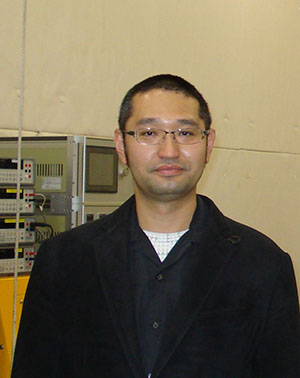 Tomohiro Ohuchi is an Associate Professor in Geodynamics Research Center at Ehime University, Japan. He received his doctorate degree on geology (2007) from Tohoku University (Japan) for works on grain-growth kinetics of minerals in bimineralic rocks under the supervisor of Prof. Nakamura. In 2008, he was granted an abroad fellowship from Japan Society for the Promotion of Science, which transferred him to Yale University. In Prof. Karato’s group, he learned about rheological properties of minerals. He investigated the role of orthoenstatite on the initiation of plate tectonics in the Earth through high-pressure and high-temperature deformation experiments. In 2009, he moved to Ehime University as a postdoctoral fellow and was promoted to an Assistant Professor of mineral physics in 2013 (to an Associate Professor in 2020). He explored experimental techniques on rock deformation under the pressure-temperature conditions of Earth’s upper mantle and transition zone. His current interest mainly lies in semi-brittle behavior of rocks at high pressures to understand the process triggering intermediate/deep earthquakes in slabs.
Tomohiro Ohuchi is an Associate Professor in Geodynamics Research Center at Ehime University, Japan. He received his doctorate degree on geology (2007) from Tohoku University (Japan) for works on grain-growth kinetics of minerals in bimineralic rocks under the supervisor of Prof. Nakamura. In 2008, he was granted an abroad fellowship from Japan Society for the Promotion of Science, which transferred him to Yale University. In Prof. Karato’s group, he learned about rheological properties of minerals. He investigated the role of orthoenstatite on the initiation of plate tectonics in the Earth through high-pressure and high-temperature deformation experiments. In 2009, he moved to Ehime University as a postdoctoral fellow and was promoted to an Assistant Professor of mineral physics in 2013 (to an Associate Professor in 2020). He explored experimental techniques on rock deformation under the pressure-temperature conditions of Earth’s upper mantle and transition zone. His current interest mainly lies in semi-brittle behavior of rocks at high pressures to understand the process triggering intermediate/deep earthquakes in slabs.
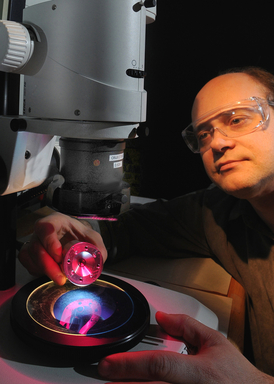 Vitali is Research Professor at the University of Chicago, Center for Advanced Radiation Sources. He also holds Research Affiliate position at the University of Hawaii, Hawaii Institute of Geophysics & Planetology. Vitali’s research interests are in the field of the high pressure physics which is dedicated to understand how the extreme conditions (both static and dynamic) affect the physical and chemical properties of materials: structure, phase transition, melting, partitioning, chemical reaction, diffusion, elasticity etc. that can be used for realistic modeling of the composition and dynamics of the terrestrial and giant planet interiors, development of theoretical models. He is responsible for all aspects of the operation, user support and development of the advanced high-pressure high-temperature techniques at GeoSoilEnviroCARS synchrotron beamlines (sector 13) at the Advanced Photon Source: double-sided laser heating in the diamond anvil cell coupled with high resolution x-ray micro-diffraction, x-ray emission spectroscopy and inelastic x-ray scattering; on-/off-line Raman, Brillouin, and optical spectroscopy; time-domain experiments.
Vitali is Research Professor at the University of Chicago, Center for Advanced Radiation Sources. He also holds Research Affiliate position at the University of Hawaii, Hawaii Institute of Geophysics & Planetology. Vitali’s research interests are in the field of the high pressure physics which is dedicated to understand how the extreme conditions (both static and dynamic) affect the physical and chemical properties of materials: structure, phase transition, melting, partitioning, chemical reaction, diffusion, elasticity etc. that can be used for realistic modeling of the composition and dynamics of the terrestrial and giant planet interiors, development of theoretical models. He is responsible for all aspects of the operation, user support and development of the advanced high-pressure high-temperature techniques at GeoSoilEnviroCARS synchrotron beamlines (sector 13) at the Advanced Photon Source: double-sided laser heating in the diamond anvil cell coupled with high resolution x-ray micro-diffraction, x-ray emission spectroscopy and inelastic x-ray scattering; on-/off-line Raman, Brillouin, and optical spectroscopy; time-domain experiments.
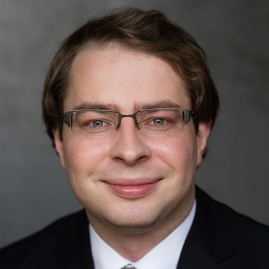 Clemens Prescher is a Junior-Professor for Geomaterials and Crystalline Materials at the University of Freiburg in Germany. His main research interest lies in understanding geologically relevant materials under high pressure and temperature conditions. For this purpose, he has been using a large amount of different analytical techniques, such as Mößbauer spectroscopy, X-ray diffraction, inelastic X-ray scattering and transmission-electron microscopy. Apart from his scientific contributions to many different high pressure subjects, he also contributed several data analysis software packages for different analytical methods to the community, which are now widely used among high-pressure and also non-high-pressure scientists around the world. Clemens has studied Mineralogy at the University of Jena and obtained his PhD in Experimental Geosciences at BGI at the University of Bayreuth, Germany.
Clemens Prescher is a Junior-Professor for Geomaterials and Crystalline Materials at the University of Freiburg in Germany. His main research interest lies in understanding geologically relevant materials under high pressure and temperature conditions. For this purpose, he has been using a large amount of different analytical techniques, such as Mößbauer spectroscopy, X-ray diffraction, inelastic X-ray scattering and transmission-electron microscopy. Apart from his scientific contributions to many different high pressure subjects, he also contributed several data analysis software packages for different analytical methods to the community, which are now widely used among high-pressure and also non-high-pressure scientists around the world. Clemens has studied Mineralogy at the University of Jena and obtained his PhD in Experimental Geosciences at BGI at the University of Bayreuth, Germany.
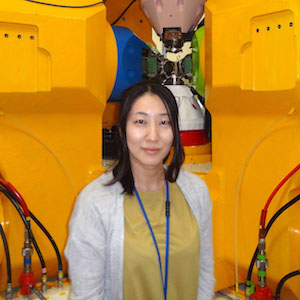 Asami Sano-Furukawa is a Principal Scientist at the MLF, J-PARC at Japan Atomic Energy Agency (JAEA), and a Guest Professor at the IMSS at KEK. She received a Ph.D. from the Tohoku University in Earth science and joined ISSP at the University of Tokyo as a postdoctoral fellow before moved to JAEA to work on the PLANET, the high-pressure neutron diffractometer in the MLF. Her research interests include understanding the properties of the hydrogen bonds in the minerals at the Earth's mantle conditions, applying mineral physics, geophysics, and geochemistry. Based on this motivation, she has contributed to developing a neutron diffraction technique at high-pressure and high-temperature using a large-volume six-axis multi-anvil press in the PLANET.
Asami Sano-Furukawa is a Principal Scientist at the MLF, J-PARC at Japan Atomic Energy Agency (JAEA), and a Guest Professor at the IMSS at KEK. She received a Ph.D. from the Tohoku University in Earth science and joined ISSP at the University of Tokyo as a postdoctoral fellow before moved to JAEA to work on the PLANET, the high-pressure neutron diffractometer in the MLF. Her research interests include understanding the properties of the hydrogen bonds in the minerals at the Earth's mantle conditions, applying mineral physics, geophysics, and geochemistry. Based on this motivation, she has contributed to developing a neutron diffraction technique at high-pressure and high-temperature using a large-volume six-axis multi-anvil press in the PLANET.
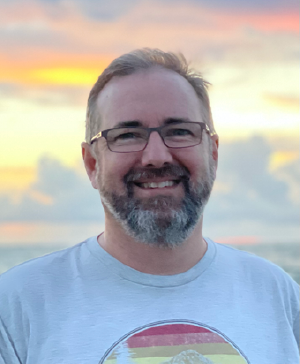 Dr Matt Tucker is the Diffraction Section head at Oak Ridge National Laboratory (ORNL). This section operates and maintains 9 diffractometers, 4 at HIFR and 5 at the SNS and includes the NOMAD instrument, which specializes in the measurement of the local structure of materials.
Prior to joining ORNL, Matt was a Research Scientist in the Crystallography Group at the ISIS Neutron and Muon Source, Rutherford Appleton Laboratory from 2005. From 2013, he also had a joint appointment at the Diamond light source. During his time at ISIS, he was an instrument scientist on the high flux medium resolution POLARIS diffractometer, which is a world-class instrument for total scattering measurements and the PEARL diffractometer, which is a world-class instrument for high-pressure neutron diffraction measurements. At Diamond he was helping to design, build and ultimately run Europe’s first dedicated X-ray-PDF beamline (XPDF).
Matt’s research interests focus on using and developing total scattering techniques for the study of disordered crystalline materials; and he is the co-author of over 150 publications. Highlights include studies of negative thermal expansion, pressure induced amorphisation and colossal thermal expansion. He has successfully led the development of a Reverse Monte Carlo program (RMCProfile) specifically for the analysis of total scattering data of polycrystalline materials (with Prof. Martin Dove, Prof. David Keen, Dr Igor Levin and several other contributors). This program suite is freely available for download from www.rmcprofile.org.
Dr Matt Tucker is the Diffraction Section head at Oak Ridge National Laboratory (ORNL). This section operates and maintains 9 diffractometers, 4 at HIFR and 5 at the SNS and includes the NOMAD instrument, which specializes in the measurement of the local structure of materials.
Prior to joining ORNL, Matt was a Research Scientist in the Crystallography Group at the ISIS Neutron and Muon Source, Rutherford Appleton Laboratory from 2005. From 2013, he also had a joint appointment at the Diamond light source. During his time at ISIS, he was an instrument scientist on the high flux medium resolution POLARIS diffractometer, which is a world-class instrument for total scattering measurements and the PEARL diffractometer, which is a world-class instrument for high-pressure neutron diffraction measurements. At Diamond he was helping to design, build and ultimately run Europe’s first dedicated X-ray-PDF beamline (XPDF).
Matt’s research interests focus on using and developing total scattering techniques for the study of disordered crystalline materials; and he is the co-author of over 150 publications. Highlights include studies of negative thermal expansion, pressure induced amorphisation and colossal thermal expansion. He has successfully led the development of a Reverse Monte Carlo program (RMCProfile) specifically for the analysis of total scattering data of polycrystalline materials (with Prof. Martin Dove, Prof. David Keen, Dr Igor Levin and several other contributors). This program suite is freely available for download from www.rmcprofile.org.
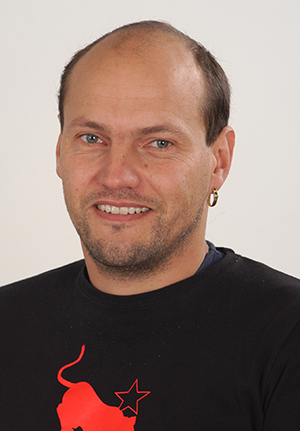 Max Wilke is a Professor for Mineralogy at Universität Potsdam in Germany. His main research lies in understanding geochemical processes mostly in the deep Earth, with a focus on the structural properties of elements in relevant phases. A major aspect of his research deals with non-crystalline materials such as silicate melts and aqueous fluids. He has been using a large variety of techniques with major focus on developing X-ray spectroscopic procedures that provide insights to redox processes, local and electronic structure, also at extreme conditions. Max has studied Mineralogy at Universität Hannover (Germany), where he also received his PhD.
Max Wilke is a Professor for Mineralogy at Universität Potsdam in Germany. His main research lies in understanding geochemical processes mostly in the deep Earth, with a focus on the structural properties of elements in relevant phases. A major aspect of his research deals with non-crystalline materials such as silicate melts and aqueous fluids. He has been using a large variety of techniques with major focus on developing X-ray spectroscopic procedures that provide insights to redox processes, local and electronic structure, also at extreme conditions. Max has studied Mineralogy at Universität Hannover (Germany), where he also received his PhD.
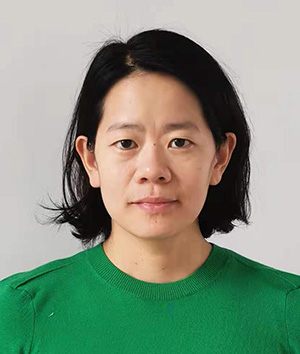 Li Zhang is currently a staff scientist at the Center for High Pressure Science and Technology Advanced Research (HPSTAR). Her research interests are mainly focused on understanding the structure, composition and evolution history of Earth and other planets through high pressure-temperature experiments. She uses the laser-heated diamond anvil cell to simulate the extremely high pressures-temperature conditions inside the Earth and other planets. In the recent years, she has contributed to the development of high-pressure multigrain crystallography at megabar pressures. Single crystals required by the conventional single-crystal x-ray diffraction are often unachievable after phase transitions under high pressure-temperature conditions. Applying the multigrain method, single-crystal structure determination and refinement can be achieved in a multiphase polycrystalline sample at megabar pressures. The multigrain capabilities can be further extended to the multimegabar pressure range. Li Zhang was the recipient of the Shen-Su Sun Award. Her publications are mainly focused on high-pressure mineralogy and crystallography.
Li Zhang is currently a staff scientist at the Center for High Pressure Science and Technology Advanced Research (HPSTAR). Her research interests are mainly focused on understanding the structure, composition and evolution history of Earth and other planets through high pressure-temperature experiments. She uses the laser-heated diamond anvil cell to simulate the extremely high pressures-temperature conditions inside the Earth and other planets. In the recent years, she has contributed to the development of high-pressure multigrain crystallography at megabar pressures. Single crystals required by the conventional single-crystal x-ray diffraction are often unachievable after phase transitions under high pressure-temperature conditions. Applying the multigrain method, single-crystal structure determination and refinement can be achieved in a multiphase polycrystalline sample at megabar pressures. The multigrain capabilities can be further extended to the multimegabar pressure range. Li Zhang was the recipient of the Shen-Su Sun Award. Her publications are mainly focused on high-pressure mineralogy and crystallography.
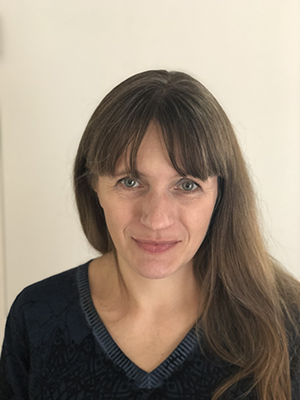 Eva Zurek received a BSc in Chemistry and Physics (2000) and an MSc (2002) from the University of Calgary, Canada. Eva was awarded a PhD fellowship from the Max Planck Research School for Advanced Materials in Stuttgart, Germany, and her postdoctoral research was performed at Cornell University with Roald Hoffmann in collaboration with Neil Ashcroft. In 2009 Eva became an Assistant Professor at the University at Buffalo, SUNY, where she was promoted to Full Professor in 2016. Eva received the Alfred P Sloan Fellowship (2013), The Minerals, Metals and Materials Society Young Leader Award (2014), UB Exceptional Scholar Young Investigator Award (2014), Quantum Systems in Chemistry and Physics Promising Young Scientist Award (2014), the APT Teaching Award from UB (2016), and a SUNY Chancellor’s Award for Excellence in Scholarship (2021). She is an editorial board member of Physical Review Materials, and a Member at Large for the American Physical Society’s Division of Computational Physics. Eva’s research is geared towards studying the electronic structure, properties and reactivity of a wide variety of materials using first-principles calculations. She is interested in high pressure science, superhard, superconducting, quantum and planetary materials, catalysis, as well as solvated electrons and electrides. Her group develops algorithms for the a priori prediction of the structures of crystals, interfaces them with machine learning models, and applies them in materials discovery. Eva has been interviewed by Scientific American, NPR’s Science Friday, as well as CBC’s Quirks and Quarks on breakthroughs in the search for a room temperature superconductor.
Eva Zurek received a BSc in Chemistry and Physics (2000) and an MSc (2002) from the University of Calgary, Canada. Eva was awarded a PhD fellowship from the Max Planck Research School for Advanced Materials in Stuttgart, Germany, and her postdoctoral research was performed at Cornell University with Roald Hoffmann in collaboration with Neil Ashcroft. In 2009 Eva became an Assistant Professor at the University at Buffalo, SUNY, where she was promoted to Full Professor in 2016. Eva received the Alfred P Sloan Fellowship (2013), The Minerals, Metals and Materials Society Young Leader Award (2014), UB Exceptional Scholar Young Investigator Award (2014), Quantum Systems in Chemistry and Physics Promising Young Scientist Award (2014), the APT Teaching Award from UB (2016), and a SUNY Chancellor’s Award for Excellence in Scholarship (2021). She is an editorial board member of Physical Review Materials, and a Member at Large for the American Physical Society’s Division of Computational Physics. Eva’s research is geared towards studying the electronic structure, properties and reactivity of a wide variety of materials using first-principles calculations. She is interested in high pressure science, superhard, superconducting, quantum and planetary materials, catalysis, as well as solvated electrons and electrides. Her group develops algorithms for the a priori prediction of the structures of crystals, interfaces them with machine learning models, and applies them in materials discovery. Eva has been interviewed by Scientific American, NPR’s Science Friday, as well as CBC’s Quirks and Quarks on breakthroughs in the search for a room temperature superconductor.
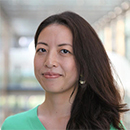
Cornell University - Ithaca (NY), US
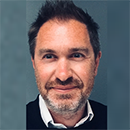
University of Oxford - Oxford, UK
Periodic order is the sine qua non of crystallography. Yet sometimes it is the departure from order that is crucial for material function. Proteins, frustrated magnets, photovoltaics, battery materials, high-temperature superconductors — there are many examples of important systems where disorder of one sort or another plays a pivotal role. Crystallographically, the signature of disorder is the existence of a diffuse component to the scattering function, usually orders of magnitude weaker than the conventional Bragg scattering. The advent of intense radiation sources, the development of revolutionary detector technologies, and the ready availability of high-performance computing have collectively transformed our ability to measure and interpret diffuse scattering from disordered crystals. As a result, scientists across many disciplines — from biochemistry to condensed-matter physics — are discovering all sorts of new types of disorder and importantly, all sorts of new ways in which disorder is critical for function.
This course will cover the background necessary to measure and interpret diffuse scattering from disordered crystals. Its contents span the theory of diffraction and diffuse scattering, the practicalities of its measurement, and the many different approaches taken to its interpretation. The programme is loosely split into two strands – one with a focus on materials chemistry & physics and the other concerned mostly with protein dynamics. Collectively, the course will cover the various origins of diffuse scattering (e.g. dynamics, compositional/displacive disorder, magnetic disorder), and its form in both single-crystal and powder samples. There will be extensive discussion of real-space interpretations, including the well-known pair distribution function (PDF) and its variants (e.g. 3D-ΔPDF). These lectures will draw on and highlight key scientific discoveries from the recent literature. In parallel to the lecture course, the course will offer a broad selection of tutorials and workshops that will cover many of the key analysis approaches: such as molecular dynamics, Monte Carlo simulations, the Debye equation, small-box and big-box atomistic modelling.
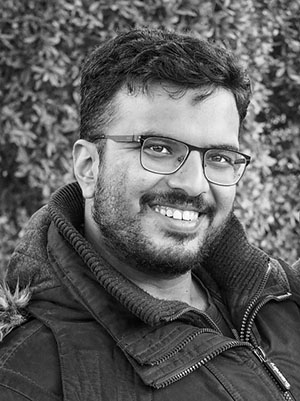 Kartik Ayyer is an independent Max Planck Research Group leader at the Max Planck Institute for the Structure and Dynamics of Matter since 2018. After receiving his BTech in Engineering Physics from the Indian Institute of Technology ((IIT) Delhi in 2009, Kartik pursued a PhD at Cornell University on reconstruction algorithms for X-ray single particle imaging under the supervision of Veit Elser. Following this, he moved to Hamburg to work with Henry Chapman in 2014 to get closer to the experimental side of X-ray diffraction and imaging at X-ray free-electron lasers. Among other topics, he acquired an interest in diffuse scattering of protein crystals, where he developed methods to obtain higher resolution electron densities than from just the Bragg peaks. He is also developing algorithms to use the additional information to understand conformational dynamics of the molecules within the crystal. He is especially interested in membrane protein systems which are relatively poorly ordered.
Kartik Ayyer is an independent Max Planck Research Group leader at the Max Planck Institute for the Structure and Dynamics of Matter since 2018. After receiving his BTech in Engineering Physics from the Indian Institute of Technology ((IIT) Delhi in 2009, Kartik pursued a PhD at Cornell University on reconstruction algorithms for X-ray single particle imaging under the supervision of Veit Elser. Following this, he moved to Hamburg to work with Henry Chapman in 2014 to get closer to the experimental side of X-ray diffraction and imaging at X-ray free-electron lasers. Among other topics, he acquired an interest in diffuse scattering of protein crystals, where he developed methods to obtain higher resolution electron densities than from just the Bragg peaks. He is also developing algorithms to use the additional information to understand conformational dynamics of the molecules within the crystal. He is especially interested in membrane protein systems which are relatively poorly ordered.
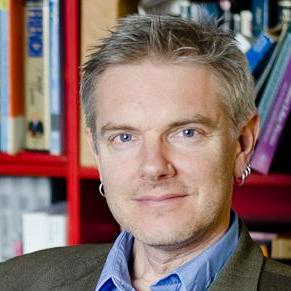 Prof. Billinge has more than 25 years of experience developing and applying techniques to study local structure in materials using x-ray, neutron and electron diffraction including the development of novel data analysis methods including graph theoretic, Artificial Intelligence and Machine Learning approaches. He earned his Ph.D in Materials Science and Engineering from University of Pennsylvania in 1992. After 13 years as a faculty member at Michigan State University, in 2008 he took up his current position as Professor of Materials Science and Applied Physics and Applied Mathematics at Columbia University and Physicist at Brookhaven National Laboratory. Prof. Billinge has published more than 300 papers in scholarly journals. He is a fellow of the American Physical Society and the Neutron Scattering Society of America, a former Fulbright and Sloan fellow and has earned a number of awards including the 2018 Warren Award of the American Crystallographic Association and being honored in 2011 for contributions to the nation as an immigrant by the Carnegie Corporation of New York, the 2010 J. D. Hanawalt Award of the International Center for Diffraction Data, University Distinguished Faculty award at Michigan State, the Thomas H. Osgood Undergraduate Teaching Award. He is Section Editor of Acta Crystallographica Section A: Advances and Foundations. He regularly chairs and participates in reviews of major facilities and federally funded programs.
Prof. Billinge has more than 25 years of experience developing and applying techniques to study local structure in materials using x-ray, neutron and electron diffraction including the development of novel data analysis methods including graph theoretic, Artificial Intelligence and Machine Learning approaches. He earned his Ph.D in Materials Science and Engineering from University of Pennsylvania in 1992. After 13 years as a faculty member at Michigan State University, in 2008 he took up his current position as Professor of Materials Science and Applied Physics and Applied Mathematics at Columbia University and Physicist at Brookhaven National Laboratory. Prof. Billinge has published more than 300 papers in scholarly journals. He is a fellow of the American Physical Society and the Neutron Scattering Society of America, a former Fulbright and Sloan fellow and has earned a number of awards including the 2018 Warren Award of the American Crystallographic Association and being honored in 2011 for contributions to the nation as an immigrant by the Carnegie Corporation of New York, the 2010 J. D. Hanawalt Award of the International Center for Diffraction Data, University Distinguished Faculty award at Michigan State, the Thomas H. Osgood Undergraduate Teaching Award. He is Section Editor of Acta Crystallographica Section A: Advances and Foundations. He regularly chairs and participates in reviews of major facilities and federally funded programs.
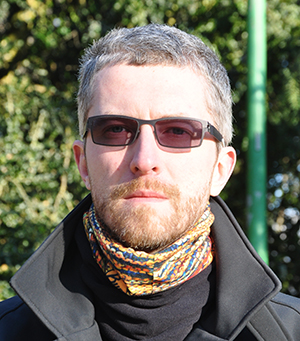 Alexeï Bosak supervises ID28 beamline at European Synchrotron Radiation Facility. He received his PhD in Chemistry at Moscow State University in 2002, PhD in Materials Science at Institut National Polytechnique de Grenoble in 2003, Dr. habil. in Physics at Université Joseph Fourier in 2008, and Dr. Sc. in Physics and Mathematics at St. Petersburg State Polytechnic University in 2010. Started postdoctoral fellowship at ESRF in 2003, then was appointed as beamline scientist in 2005, becoming the instrument responsible since 2013. Acquired a large experience in the domains of inelastic and diffuse x-ray scattering. His scientific interests are mainly attached to the ferroic and strongly correlated materials.
Alexeï Bosak supervises ID28 beamline at European Synchrotron Radiation Facility. He received his PhD in Chemistry at Moscow State University in 2002, PhD in Materials Science at Institut National Polytechnique de Grenoble in 2003, Dr. habil. in Physics at Université Joseph Fourier in 2008, and Dr. Sc. in Physics and Mathematics at St. Petersburg State Polytechnic University in 2010. Started postdoctoral fellowship at ESRF in 2003, then was appointed as beamline scientist in 2005, becoming the instrument responsible since 2013. Acquired a large experience in the domains of inelastic and diffuse x-ray scattering. His scientific interests are mainly attached to the ferroic and strongly correlated materials.
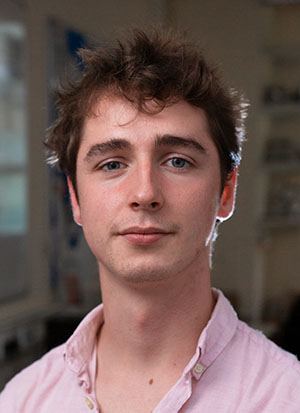 Johnathan Bulled is a PhD student in the group of Andrew Goodwin at the University of Oxford. He studied at Oxford, with a master’s project placed at both Cambridge and the Institut Laue-Langevin. His research focuses on the role of geometric frustration in inducing both magnetic and structural disorder in a range of hybrid inorganic materials. This disorder is characterised using a range of neutron and x-ray scattering experiments and linked to exploitable properties including negative thermal expansion and the magnetocaloric effect. Johnathan teaches undergraduate chemistry at Balliol College.
Johnathan Bulled is a PhD student in the group of Andrew Goodwin at the University of Oxford. He studied at Oxford, with a master’s project placed at both Cambridge and the Institut Laue-Langevin. His research focuses on the role of geometric frustration in inducing both magnetic and structural disorder in a range of hybrid inorganic materials. This disorder is characterised using a range of neutron and x-ray scattering experiments and linked to exploitable properties including negative thermal expansion and the magnetocaloric effect. Johnathan teaches undergraduate chemistry at Balliol College.
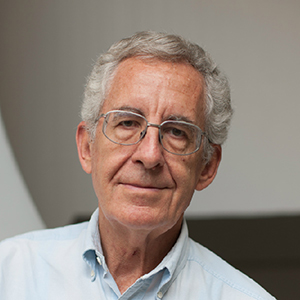 Hans-Beat Bürgi is Professor emeritus at the Department of Chemistry and Biochemistry of the University of Berne, Switzerland.
He happily enjoys his retirement at the Universities of Zürich, Western Australia and Berkeley where he collaborates with his colleagues and friends in areas of common interest: structure determination of disordered materials from diffuse scattering, quantum crystallography, dynamics and thermodynamics of crystalline polymorphs.
Hans-Beat Bürgi is Professor emeritus at the Department of Chemistry and Biochemistry of the University of Berne, Switzerland.
He happily enjoys his retirement at the Universities of Zürich, Western Australia and Berkeley where he collaborates with his colleagues and friends in areas of common interest: structure determination of disordered materials from diffuse scattering, quantum crystallography, dynamics and thermodynamics of crystalline polymorphs.
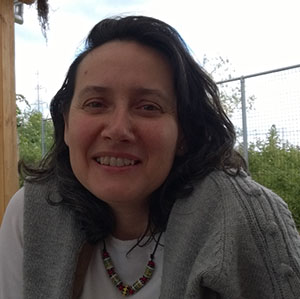 After a Laurea in Theoretical Chemistry at the University of Milan (I) and a Master in Polymer Science and Technology at the Polytechnic of Milan (I), Silvia Capelli obtained a PhD in Chemical Crystallography from the University of Bern (CH). In 2000, she moved to Grenoble (F) to work as beamline post-doc at the European Synchrotron Radiation Facility, first at the single crystal station of the Swiss-Norwegian Beamline (BM1A) and then at the Material Science beamline ID11. In 2008 she joined the Institute Laue-Langevin to work initially as co-responsible of the D10 single crystal neutron diffractometer with three-axis energy analysis and then as co-responsible of the single crystal thermal neutron diffractometer D19.
Currently, Silvia is an instrument scientist at the ISIS Neutron and Muon Facility at the Rutherford Appleton Laboratory (Oxford, UK), which she joined in 2014 as responsible for the single crystal neutron diffractometer SXD. This instrument uses the time-of-flight Laue technique to access large 3D volumes of reciprocal space in a single measurement and it is especially powerful in applications involving surveys of reciprocal space, such as studies of phase transitions, incommensurate structures and diffuse scattering.
Silvia’s research interests include: structure-properties relationship in molecular crystals, effects of isotope replacements on intermolecular interactions, molecular motion in crystals, combining different techniques in-situ (e.g. Raman spectroscopy and neutron diffraction for the study of thermo- and photo-chromic materials).
After a Laurea in Theoretical Chemistry at the University of Milan (I) and a Master in Polymer Science and Technology at the Polytechnic of Milan (I), Silvia Capelli obtained a PhD in Chemical Crystallography from the University of Bern (CH). In 2000, she moved to Grenoble (F) to work as beamline post-doc at the European Synchrotron Radiation Facility, first at the single crystal station of the Swiss-Norwegian Beamline (BM1A) and then at the Material Science beamline ID11. In 2008 she joined the Institute Laue-Langevin to work initially as co-responsible of the D10 single crystal neutron diffractometer with three-axis energy analysis and then as co-responsible of the single crystal thermal neutron diffractometer D19.
Currently, Silvia is an instrument scientist at the ISIS Neutron and Muon Facility at the Rutherford Appleton Laboratory (Oxford, UK), which she joined in 2014 as responsible for the single crystal neutron diffractometer SXD. This instrument uses the time-of-flight Laue technique to access large 3D volumes of reciprocal space in a single measurement and it is especially powerful in applications involving surveys of reciprocal space, such as studies of phase transitions, incommensurate structures and diffuse scattering.
Silvia’s research interests include: structure-properties relationship in molecular crystals, effects of isotope replacements on intermolecular interactions, molecular motion in crystals, combining different techniques in-situ (e.g. Raman spectroscopy and neutron diffraction for the study of thermo- and photo-chromic materials).
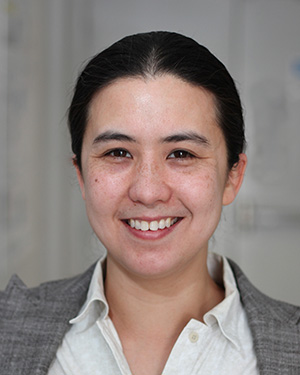 Karena Chapman is Joseph Lauher and Frank W. Fowler Endowed Chair in Materials Chemistry in the Department of Chemistry at Stony Brook University. Before moving the Stony Brook University, she was a chemist at Argonne National Laboratory, building first dedicated Pair Distribution Function instrument at the Advanced Photon Source. She received her undergraduate and graduate degrees at the University of Sydney, Australia. Her research focuses on understanding the coupling of structure and reactivity in energy-relevant materials for which she develops new operando characterization tools and analytics. She is currently engaged in projects on battery electrodes and electrolytes, nanoporous materials for catalysis and CO2 capture and advanced materials synthesis Her work has been recognized as one of American Chemical Society's Talented 12 in 2016 and was awarded the 2015 MRS Outstanding Young Investigator Award. She is a main editor of the Journal of Applied Crystallography and Deputy Director of GENESIS A Next Generation Synthesis Center funded by the US Department of Energy.
Karena Chapman is Joseph Lauher and Frank W. Fowler Endowed Chair in Materials Chemistry in the Department of Chemistry at Stony Brook University. Before moving the Stony Brook University, she was a chemist at Argonne National Laboratory, building first dedicated Pair Distribution Function instrument at the Advanced Photon Source. She received her undergraduate and graduate degrees at the University of Sydney, Australia. Her research focuses on understanding the coupling of structure and reactivity in energy-relevant materials for which she develops new operando characterization tools and analytics. She is currently engaged in projects on battery electrodes and electrolytes, nanoporous materials for catalysis and CO2 capture and advanced materials synthesis Her work has been recognized as one of American Chemical Society's Talented 12 in 2016 and was awarded the 2015 MRS Outstanding Young Investigator Award. She is a main editor of the Journal of Applied Crystallography and Deputy Director of GENESIS A Next Generation Synthesis Center funded by the US Department of Energy.
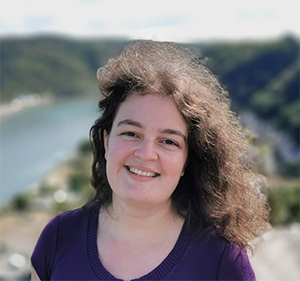 Helen Ginn is a post-doctoral research associate at Diamond Light Source, UK who specialises in methods development for structural biology. She obtained her DPhil at Oxford University in improved methods for data reduction for serial crystallography at synchrotrons and X-ray free electron lasers. After completing her doctorate, she changed focus to development of methods which would benefit structural biology as a whole, by beginning the Vagabond project, a structural refinement program which describes proteins through their bond network rather than using an atomic description. This new model description results in a dramatic reduction in the parametrisation, and benefits both refinement stability and establishing the ground truth in electron density maps. Alongside this, she developed cluster4x, which clusters datasets based on the crystallographic data, atomic coordinates or any arbitrary metadata. She has also expanded cluster4x to contribute to antibody clustering methods and interpretation of neutralisation capacity of recovered SARS-CoV-2 patients and immunised individuals. Her future direction sets to combine the improved refinement power from Vagabond with the knowledge which can be derived by running cluster4x on multiple datasets, in order to refine a single model of a protein against an arbitrary number of datasets from any combination of major structural solution methods.
Helen Ginn is a post-doctoral research associate at Diamond Light Source, UK who specialises in methods development for structural biology. She obtained her DPhil at Oxford University in improved methods for data reduction for serial crystallography at synchrotrons and X-ray free electron lasers. After completing her doctorate, she changed focus to development of methods which would benefit structural biology as a whole, by beginning the Vagabond project, a structural refinement program which describes proteins through their bond network rather than using an atomic description. This new model description results in a dramatic reduction in the parametrisation, and benefits both refinement stability and establishing the ground truth in electron density maps. Alongside this, she developed cluster4x, which clusters datasets based on the crystallographic data, atomic coordinates or any arbitrary metadata. She has also expanded cluster4x to contribute to antibody clustering methods and interpretation of neutralisation capacity of recovered SARS-CoV-2 patients and immunised individuals. Her future direction sets to combine the improved refinement power from Vagabond with the knowledge which can be derived by running cluster4x on multiple datasets, in order to refine a single model of a protein against an arbitrary number of datasets from any combination of major structural solution methods.
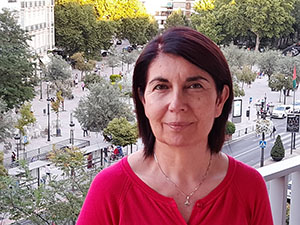 Dr. Guagliardi is a senior scientist at Institute of Crystallography (IC) of CNR, Italy, Como branch. Her major research interest focuses on the development and application of experimental and modelling tools to investigate nanocrystalline materials at the atomic and nanometer scales based on X-ray total scattering, so that both Bragg and diffuse scattering are equally taken into account. On this topic, she has been coordinating an extended network of collaborations, set at the Total Scattering Laboratory (To.Sca.Lab) in Como, which includes scientists from University of Insubria and CNR, and from the Material Science Beamline of the Swiss Light Source, where total scattering experiments are carried out in the wide-angle region. Here, suitable data acquisition and data reduction protocols have also been developed. A major research line in the field is the modelling in reciprocal-space, based on atomistic models of nanocrystals and composites, and the use of the Debye Scattering Equation, with original contribution to the development of dedicated computational tools (Debussy Suite). Advances of this approach, together with combination of wide and small angle scattering, have been pursued through investigations of ultrasmall semiconductor nanocrystals (metal chalcogenides and metal halide perovskites), particularly from colloidal synthesis, but also metals, oxides and nanocomposites. The goal is extracting quantitative information on size- and surface-induced structural distortions, symmetry breaking, lattice strains and different kinds of defectiveness for structure-property correlation studies.
During her education and career, she acquired a broad background in crystallography, diffraction techniques and ab initio structure determination by Direct Methods, working in the group led by Prof. C. Giacovazzo, and contributed to the development of popular crystallographic packages (SIR92/SIR98 and EXPO) to solve crystal structures by single crystal and powder diffraction data. She got a PhD in Chemistry at the University of Insubria, Italy, with a Thesis on the application of the Debye Scattering Equation on nanomaterials for investigating structure-property correlations. She has a long-standing experience in the organization of schools on fundamental crystallography and total scattering and in managing hands-on with the packages she co-authored.
Dr. Guagliardi is a senior scientist at Institute of Crystallography (IC) of CNR, Italy, Como branch. Her major research interest focuses on the development and application of experimental and modelling tools to investigate nanocrystalline materials at the atomic and nanometer scales based on X-ray total scattering, so that both Bragg and diffuse scattering are equally taken into account. On this topic, she has been coordinating an extended network of collaborations, set at the Total Scattering Laboratory (To.Sca.Lab) in Como, which includes scientists from University of Insubria and CNR, and from the Material Science Beamline of the Swiss Light Source, where total scattering experiments are carried out in the wide-angle region. Here, suitable data acquisition and data reduction protocols have also been developed. A major research line in the field is the modelling in reciprocal-space, based on atomistic models of nanocrystals and composites, and the use of the Debye Scattering Equation, with original contribution to the development of dedicated computational tools (Debussy Suite). Advances of this approach, together with combination of wide and small angle scattering, have been pursued through investigations of ultrasmall semiconductor nanocrystals (metal chalcogenides and metal halide perovskites), particularly from colloidal synthesis, but also metals, oxides and nanocomposites. The goal is extracting quantitative information on size- and surface-induced structural distortions, symmetry breaking, lattice strains and different kinds of defectiveness for structure-property correlation studies.
During her education and career, she acquired a broad background in crystallography, diffraction techniques and ab initio structure determination by Direct Methods, working in the group led by Prof. C. Giacovazzo, and contributed to the development of popular crystallographic packages (SIR92/SIR98 and EXPO) to solve crystal structures by single crystal and powder diffraction data. She got a PhD in Chemistry at the University of Insubria, Italy, with a Thesis on the application of the Debye Scattering Equation on nanomaterials for investigating structure-property correlations. She has a long-standing experience in the organization of schools on fundamental crystallography and total scattering and in managing hands-on with the packages she co-authored.
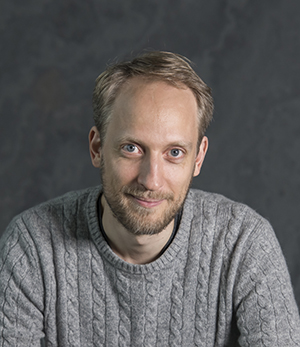 Doeke Hekstra is assistant professor of Moleculear and Cellular Bioloy and of Applied Physics at Harvard University (since Oct. 2016). He holds a PhD in microbial ecology from Rockefeller University and performed postdoctoral research at UT Southwestern Medical Center. Doeke is interested in understanding the interplay between physics and evolution, using proteins as his model systems. His group currently focuses on developing methods and algorithms to probe the reaction coordinates of proteins using time-resolved X-ray crystallography and related crystallographic methods at synchrotrons and XFELs.
Doeke Hekstra is assistant professor of Moleculear and Cellular Bioloy and of Applied Physics at Harvard University (since Oct. 2016). He holds a PhD in microbial ecology from Rockefeller University and performed postdoctoral research at UT Southwestern Medical Center. Doeke is interested in understanding the interplay between physics and evolution, using proteins as his model systems. His group currently focuses on developing methods and algorithms to probe the reaction coordinates of proteins using time-resolved X-ray crystallography and related crystallographic methods at synchrotrons and XFELs.
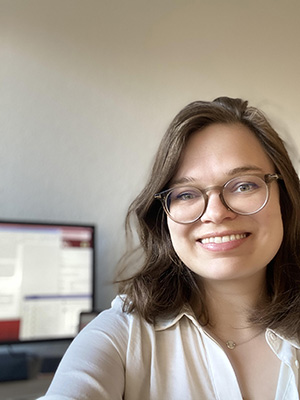 Kirsten M. Ø. Jensen is an associate professor at Department of Chemistry at University of Copenhagen. She received her Ph.D. in Chemistry from Aarhus University in 2013 under supervision of Prof. Bo B. Iversen, and following a postdoc fellowship at Columbia University with Prof. Simon J. L. Billinge, she started her research group in Copenhagen in 2015. The research in her group concerns nanomaterials, focusing especially on the use of X-ray and neutron scattering to elucidate the relation between structure and formation mechanisms of nanoparticles. Pair distribution function analysis is central to her research, and the Jensen group is active in development of new PDF modelling methods and experiments.
Kirsten M. Ø. Jensen is an associate professor at Department of Chemistry at University of Copenhagen. She received her Ph.D. in Chemistry from Aarhus University in 2013 under supervision of Prof. Bo B. Iversen, and following a postdoc fellowship at Columbia University with Prof. Simon J. L. Billinge, she started her research group in Copenhagen in 2015. The research in her group concerns nanomaterials, focusing especially on the use of X-ray and neutron scattering to elucidate the relation between structure and formation mechanisms of nanoparticles. Pair distribution function analysis is central to her research, and the Jensen group is active in development of new PDF modelling methods and experiments.
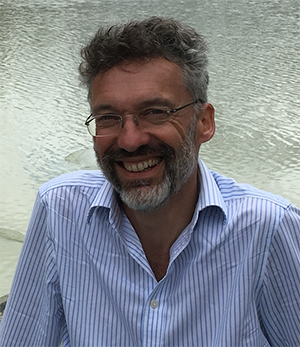 David Keen is an individual merit scientist at the ISIS Neutron Facility, Rutherford Appleton Laboratory and a visiting professor in the Physics Department of Oxford University. He has been using diffuse scattering since his DPhil in Oxford in the late 1980s, with his research focused on developing and exploiting neutron and X-ray total scattering/pair distribution function measurements in new and more effective ways. He was the first to apply the reverse Monte Carlo (RMC) big box method to a crystalline material and was part of the team who developed the RMCProfile code. He has been the senior beamline scientist on the SXD single crystal diffractometer and - more recently - the GEM powder diffractometer at ISIS. His research themes are varied, including phase transitions and thermally-induced disordering phenomena, and the relationship between crystalline and amorphous structure. He has been the President of the British Crystallographic Association, the Chair of the International Advisory Committee for all Budapest RMC Conferences and an advisor for several total scattering instrument designs at central facilities worldwide.
David Keen is an individual merit scientist at the ISIS Neutron Facility, Rutherford Appleton Laboratory and a visiting professor in the Physics Department of Oxford University. He has been using diffuse scattering since his DPhil in Oxford in the late 1980s, with his research focused on developing and exploiting neutron and X-ray total scattering/pair distribution function measurements in new and more effective ways. He was the first to apply the reverse Monte Carlo (RMC) big box method to a crystalline material and was part of the team who developed the RMCProfile code. He has been the senior beamline scientist on the SXD single crystal diffractometer and - more recently - the GEM powder diffractometer at ISIS. His research themes are varied, including phase transitions and thermally-induced disordering phenomena, and the relationship between crystalline and amorphous structure. He has been the President of the British Crystallographic Association, the Chair of the International Advisory Committee for all Budapest RMC Conferences and an advisor for several total scattering instrument designs at central facilities worldwide.
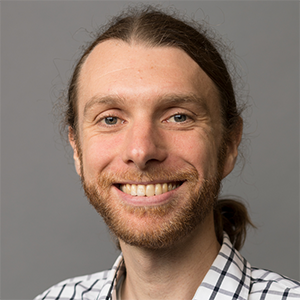 Steve Meisburger is a Research Associate at Cornell University working in Nozomi Ando's lab in Chemistry and Chemical Biology. He earned his doctorate in applied physics at Cornell and did his postdoctoral work at Princeton and Cornell. Dr. Meisburger's research focuses on visualizing enzyme motions, in particular those involved in allosteric regulation, by developing methods for solution X-ray scattering and diffuse scattering from crystals.
Steve Meisburger is a Research Associate at Cornell University working in Nozomi Ando's lab in Chemistry and Chemical Biology. He earned his doctorate in applied physics at Cornell and did his postdoctoral work at Princeton and Cornell. Dr. Meisburger's research focuses on visualizing enzyme motions, in particular those involved in allosteric regulation, by developing methods for solution X-ray scattering and diffuse scattering from crystals.
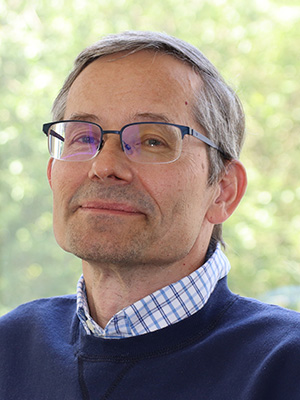 Reinhard B. Neder studied mineralogy in Germany and in the USA. He earned a MS in geoscience at the Arizona State University, Tempe USA and a PhD in crystallography at the Ludwig-Maximilians-University, Munich, Germany. He was professor in the geoscience department in Würzburg, Germany and is now a Professor of Physics at the Friedrich-Alexander-University Erlangen-Nürnberg, Germany. His research activities predominantly concern the study of disordered matter. This includes the synthesis and characterization of nanoparticles and the analysis of diffuse single crystal data. His experimental methods focus on powder and single crystal diffraction employing X-rays, neutrons and electrons. He his the principal author of the DISCUS software suite. This suite offers to simulate any kind of crystal, or nanoparticle structure, with a special emphasis to build disordered materials and nanoparticles. The software includes a rich set of tools to introduce defects and to refine the structure against powder or single crystal diffraction data respectively the powder-PDF or 3D-PDF.
Reinhard B. Neder studied mineralogy in Germany and in the USA. He earned a MS in geoscience at the Arizona State University, Tempe USA and a PhD in crystallography at the Ludwig-Maximilians-University, Munich, Germany. He was professor in the geoscience department in Würzburg, Germany and is now a Professor of Physics at the Friedrich-Alexander-University Erlangen-Nürnberg, Germany. His research activities predominantly concern the study of disordered matter. This includes the synthesis and characterization of nanoparticles and the analysis of diffuse single crystal data. His experimental methods focus on powder and single crystal diffraction employing X-rays, neutrons and electrons. He his the principal author of the DISCUS software suite. This suite offers to simulate any kind of crystal, or nanoparticle structure, with a special emphasis to build disordered materials and nanoparticles. The software includes a rich set of tools to introduce defects and to refine the structure against powder or single crystal diffraction data respectively the powder-PDF or 3D-PDF.
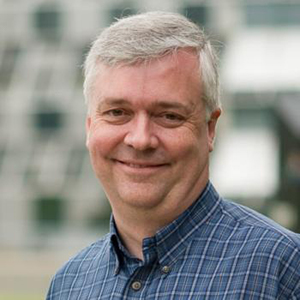 Ray Osborn is a Senior Scientist in the Materials Science Division of Argonne National Laboratory, which he joined 30 years ago following post-doctoral research at the University of Oxford and six years at the ISIS Pulsed Neutron Source. His research is in the field of strongly correlated electron systems probing spin, charge and orbital correlations using neutrons and x-rays. His scientific interests have included quantum critical scaling in actinide compounds, the role of polaron correlations in colossal magnetoresistance, phase competition in iron arsenides, and structural phase transitions in systems with strong spin-orbit coupling. The importance of understanding the role of disorder in such phenomena led to an interest in developing more efficient methods of measuring single crystal diffuse scattering both with neutrons and high-energy x-rays. Ray Osborn is a Fellow of the American Physical Society and the Neutron Scattering Society of America and was awarded the University of Chicago Distinguished Performance Award in 2006.
Ray Osborn is a Senior Scientist in the Materials Science Division of Argonne National Laboratory, which he joined 30 years ago following post-doctoral research at the University of Oxford and six years at the ISIS Pulsed Neutron Source. His research is in the field of strongly correlated electron systems probing spin, charge and orbital correlations using neutrons and x-rays. His scientific interests have included quantum critical scaling in actinide compounds, the role of polaron correlations in colossal magnetoresistance, phase competition in iron arsenides, and structural phase transitions in systems with strong spin-orbit coupling. The importance of understanding the role of disorder in such phenomena led to an interest in developing more efficient methods of measuring single crystal diffuse scattering both with neutrons and high-energy x-rays. Ray Osborn is a Fellow of the American Physical Society and the Neutron Scattering Society of America and was awarded the University of Chicago Distinguished Performance Award in 2006.
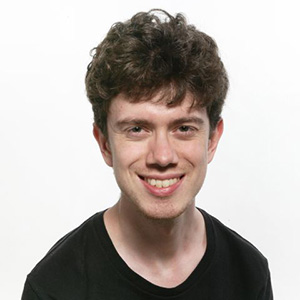 Joe Paddison's research interests are in quantum materials in which disorder of atoms or spins generates unconventional states of matter, such as spin liquids and disordered crystals. He uses scattering experiments and atomistic modeling techniques to study these systems. He is particularly interested in interpreting diffuse scattering data, and is the author of the Spinvert program for magnetic diffuse scattering analysis. After studying Chemistry as an undergraduate, Joe received his PhD in 2015 under the joint supervision of Andrew Goodwin (University of Oxford) and Ross Stewart (ISIS Neutron and Muon Source). He was subsequently a postdoc at Georgia Tech and a Junior Research Fellow at the University of Cambridge. He is currently a Distinguished Staff Fellow at the Oak Ridge National Laboratory, USA.
Joe Paddison's research interests are in quantum materials in which disorder of atoms or spins generates unconventional states of matter, such as spin liquids and disordered crystals. He uses scattering experiments and atomistic modeling techniques to study these systems. He is particularly interested in interpreting diffuse scattering data, and is the author of the Spinvert program for magnetic diffuse scattering analysis. After studying Chemistry as an undergraduate, Joe received his PhD in 2015 under the joint supervision of Andrew Goodwin (University of Oxford) and Ross Stewart (ISIS Neutron and Muon Source). He was subsequently a postdoc at Georgia Tech and a Junior Research Fellow at the University of Cambridge. He is currently a Distinguished Staff Fellow at the Oak Ridge National Laboratory, USA.
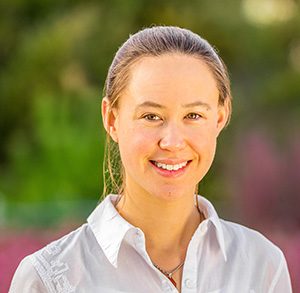 Ariana Peck completed her PhD in Biochemistry at Stanford University in 2018, with a focus on studying protein motions using X-ray diffuse scattering and molecular dynamics simulations. As a Damon Runyon Fellow at Caltech, she worked on methods development in cryo-electron tomography, including the application of this technique to protein crystals. Currently she develops software for a variety of structural biology methods at SLAC National Accelerator Laboratory.
Ariana Peck completed her PhD in Biochemistry at Stanford University in 2018, with a focus on studying protein motions using X-ray diffuse scattering and molecular dynamics simulations. As a Damon Runyon Fellow at Caltech, she worked on methods development in cryo-electron tomography, including the application of this technique to protein crystals. Currently she develops software for a variety of structural biology methods at SLAC National Accelerator Laboratory.
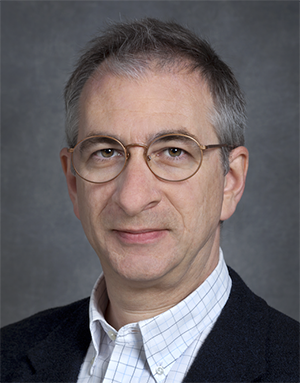 Nick Sauter is a Senior Scientist at Lawrence Berkeley National Laboratory, where he focuses on serial crystallography methods at X-ray free electron laser sources. For metalloenzymes, and photosystem II in particular, these techniques offer unique opportunities for looking at the time evolution of enzymatic reactions, even with the sequential transfer of single electrons. However, computational challenges abound, with terabyte datasets that require innovative algorithms capable of modeling every photon and every pixel in the diffraction pattern. Dr. Sauter is building GPU-capable features into the open source program cctbx.xfel, to help make data interpretation more responsive to the wealth of information in today’s datasets.
Nick Sauter is a Senior Scientist at Lawrence Berkeley National Laboratory, where he focuses on serial crystallography methods at X-ray free electron laser sources. For metalloenzymes, and photosystem II in particular, these techniques offer unique opportunities for looking at the time evolution of enzymatic reactions, even with the sequential transfer of single electrons. However, computational challenges abound, with terabyte datasets that require innovative algorithms capable of modeling every photon and every pixel in the diffraction pattern. Dr. Sauter is building GPU-capable features into the open source program cctbx.xfel, to help make data interpretation more responsive to the wealth of information in today’s datasets.
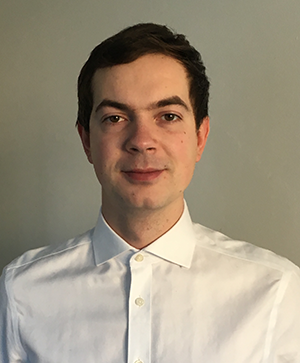 Arkadiy Simonov is a research fellow in the Department of Materials of the ETH Zurich. He has been investigating diffuse scattering since his PhD when he developed the 3D version of the Pair Distribution Function method. He then worked as postdoc in the University of Rennes where he investigated diffuse scattering from modulated composites, and in the University of Oxford, as an independent fellow in the research group of Andrew Goodwin. His current research goal is to achieve a precise control of local structure in disordered single crystals, using diffuse scattering as the primary investigation probe.
Arkadiy Simonov is a research fellow in the Department of Materials of the ETH Zurich. He has been investigating diffuse scattering since his PhD when he developed the 3D version of the Pair Distribution Function method. He then worked as postdoc in the University of Rennes where he investigated diffuse scattering from modulated composites, and in the University of Oxford, as an independent fellow in the research group of Andrew Goodwin. His current research goal is to achieve a precise control of local structure in disordered single crystals, using diffuse scattering as the primary investigation probe.
 Dr Matt Tucker is the Diffraction Section head at Oak Ridge National Laboratory (ORNL). This section operates and maintains 9 diffractometers, 4 at HIFR and 5 at the SNS and includes the NOMAD instrument, which specializes in the measurement of the local structure of materials.
Prior to joining ORNL, Matt was a Research Scientist in the Crystallography Group at the ISIS Neutron and Muon Source, Rutherford Appleton Laboratory from 2005. From 2013, he also had a joint appointment at the Diamond light source. During his time at ISIS, he was an instrument scientist on the high flux medium resolution POLARIS diffractometer, which is a world-class instrument for total scattering measurements and the PEARL diffractometer, which is a world-class instrument for high-pressure neutron diffraction measurements. At Diamond he was helping to design, build and ultimately run Europe’s first dedicated X-ray-PDF beamline (XPDF).
Matt’s research interests focus on using and developing total scattering techniques for the study of disordered crystalline materials; and he is the co-author of over 150 publications. Highlights include studies of negative thermal expansion, pressure induced amorphisation and colossal thermal expansion. He has successfully led the development of a Reverse Monte Carlo program (RMCProfile) specifically for the analysis of total scattering data of polycrystalline materials (with Prof. Martin Dove, Prof. David Keen, Dr Igor Levin and several other contributors). This program suite is freely available for download from www.rmcprofile.org.
Dr Matt Tucker is the Diffraction Section head at Oak Ridge National Laboratory (ORNL). This section operates and maintains 9 diffractometers, 4 at HIFR and 5 at the SNS and includes the NOMAD instrument, which specializes in the measurement of the local structure of materials.
Prior to joining ORNL, Matt was a Research Scientist in the Crystallography Group at the ISIS Neutron and Muon Source, Rutherford Appleton Laboratory from 2005. From 2013, he also had a joint appointment at the Diamond light source. During his time at ISIS, he was an instrument scientist on the high flux medium resolution POLARIS diffractometer, which is a world-class instrument for total scattering measurements and the PEARL diffractometer, which is a world-class instrument for high-pressure neutron diffraction measurements. At Diamond he was helping to design, build and ultimately run Europe’s first dedicated X-ray-PDF beamline (XPDF).
Matt’s research interests focus on using and developing total scattering techniques for the study of disordered crystalline materials; and he is the co-author of over 150 publications. Highlights include studies of negative thermal expansion, pressure induced amorphisation and colossal thermal expansion. He has successfully led the development of a Reverse Monte Carlo program (RMCProfile) specifically for the analysis of total scattering data of polycrystalline materials (with Prof. Martin Dove, Prof. David Keen, Dr Igor Levin and several other contributors). This program suite is freely available for download from www.rmcprofile.org.
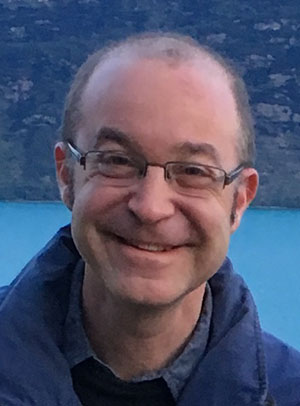 Michael E. Wall is a Senior Scientist at Los Alamos National Laboratory. He received a BS in physics from UC San Diego and a PhD in physics from Princeton University, where he worked on developing CCD X-ray detectors and used them to measure and model protein X-ray diffuse scattering data. During a postdoc at Rice University and in his early career at Los Alamos National Laboratory he worked on diverse problems in computational biology. Currently he spends most of his time using molecular-dynamics (MD) simulations to model X-ray diffraction from protein crystals, and using high-performance computing to improve X-ray data analytics and MD simulations.
Michael E. Wall is a Senior Scientist at Los Alamos National Laboratory. He received a BS in physics from UC San Diego and a PhD in physics from Princeton University, where he worked on developing CCD X-ray detectors and used them to measure and model protein X-ray diffuse scattering data. During a postdoc at Rice University and in his early career at Los Alamos National Laboratory he worked on diverse problems in computational biology. Currently he spends most of his time using molecular-dynamics (MD) simulations to model X-ray diffraction from protein crystals, and using high-performance computing to improve X-ray data analytics and MD simulations.
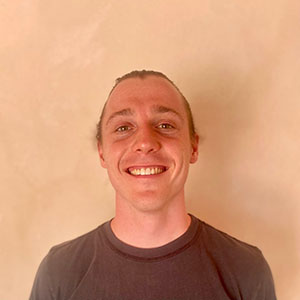 David Wych is a post-doctoral researcher at Los Alamos National Laboratory (LANL) in the Computer and Computational Sciences Division, and the Center for Nonlinear Studies. After receiving a degree in Physics from Claremont McKenna College, he pursued a PhD in Pharmaceutical Sciences from the University of California Irvine, working with advisor David L. Mobley and mentor Michael E. Wall, a scientist at LANL. He was a two-time Summer Fellow and a Graduate Student Assistant at Los Alamos during his candidacy. His primary doctoral research focus was the analysis of molecular dynamics (MD) simulations of protein crystalline systems, with the aim of contextualizing and improving models of macromolecular X-ray diffuse scattering. More recently his work has focused on the analysis of crystalline MD simulations to improve crystallographic models more broadly: using MD to study ordered water networks, coordinated ions, structural heterogeneity, and ensemble dynamics, validated against diffraction data.
David Wych is a post-doctoral researcher at Los Alamos National Laboratory (LANL) in the Computer and Computational Sciences Division, and the Center for Nonlinear Studies. After receiving a degree in Physics from Claremont McKenna College, he pursued a PhD in Pharmaceutical Sciences from the University of California Irvine, working with advisor David L. Mobley and mentor Michael E. Wall, a scientist at LANL. He was a two-time Summer Fellow and a Graduate Student Assistant at Los Alamos during his candidacy. His primary doctoral research focus was the analysis of molecular dynamics (MD) simulations of protein crystalline systems, with the aim of contextualizing and improving models of macromolecular X-ray diffuse scattering. More recently his work has focused on the analysis of crystalline MD simulations to improve crystallographic models more broadly: using MD to study ordered water networks, coordinated ions, structural heterogeneity, and ensemble dynamics, validated against diffraction data.

University of Utah, Salt Lake City (UT), US

European Laboratory for Non-Linear Spectroscopy (LENS), Florence, IT

Australian Centre for Neutron Scattering (ANSTO), Sydney, AU
Subjecting matter to extreme conditions reveals a multitude of fascinating phenomena, and is applicable to a wide range of disciplines. From the extremophiles that exist in the deepest depths of our oceans to the exotic new materials that are made when atoms are pushed ever closer together, understanding the structure of materials at extreme conditions affects Biology, Chemistry, Physics, Geoscience and Material Science. In order to achieve its goals, high pressure research has been always at the vanguard of technical progress. It is a discipline in which equipment plays a particularly important role. State-of-the-art diamond anvil cells can now achieve megabar ranges of pressure, millions of times atmospheric pressure, with this beaten by an order of magnitude in dynamic compression experiments. In this manner, scientists are able to mimic the conditions in the interiors of giant planets. Nature is even more ambitious, as in the stars petapascal pressures (the order of tens to hundreds billion atmospheres) are reached. In the laboratory, we can even create conditions of pressure, temperature and magnetic fields that are not found naturally, allowing us to complement nature to explore more exotic phases of matter.
Therefore, the course will cover broad ground in the application of extreme conditions crystallography. The topics will span from fundamentals of high-pressure single crystal and powder diffraction, to presenting the many flavors of static and dynamic compression, to reviews of sources for extreme conditions work (synchrotrons, neutrons and free electron lasers). Complementary experimental (Mössbauer spectroscopy, X-ray magnetic circular dichroism, X-ray absorption spectroscopy, inelastic scattering) and computational methods will also be discussed. Diffraction analysis on the structure of liquids, glasses and nanocrystalline materials as well as multigrain crystallography will also be introduced. The lectures will be harmonized with the related sessions of interactive tutorials, providing hands-on experience to the attendees. These workshops will be focused on basic laboratory skills and the elements of data processing software related to the high pressure
 Elena Boldyreva is a professor in Solid State Chemistry at the Novosibirsk State University. She holds a PhD in Physical Chemistry and Dr. Sci. in Solid State Chemistry. She is also an honorary Dr. Sci. of the University of Edinburgh, a Corresponding Member of the Academy of Sciences and Arts of Slovenia, a fellow of the Royal Society of Chemistry and a Member of the Academia Europea. She was one of the pioneers of the high-pressure studies of organic crystals and was a co-director of the Erice School “High Pressure Crystallography: From Novel Experimental Approaches to Applications in Cutting-Edge Technologies” in 2009 (with Przemysław Dera). She published more than 300 research articles, 20 monographs and is serving as an Editor, Editorial Board member and referee in international journals. Recently she co-organized the 2021 Workshop of the IUCr Commission on High Pressure in Novosibirsk, which attracted more than 350 virtual participants.
Elena Boldyreva is a professor in Solid State Chemistry at the Novosibirsk State University. She holds a PhD in Physical Chemistry and Dr. Sci. in Solid State Chemistry. She is also an honorary Dr. Sci. of the University of Edinburgh, a Corresponding Member of the Academy of Sciences and Arts of Slovenia, a fellow of the Royal Society of Chemistry and a Member of the Academia Europea. She was one of the pioneers of the high-pressure studies of organic crystals and was a co-director of the Erice School “High Pressure Crystallography: From Novel Experimental Approaches to Applications in Cutting-Edge Technologies” in 2009 (with Przemysław Dera). She published more than 300 research articles, 20 monographs and is serving as an Editor, Editorial Board member and referee in international journals. Recently she co-organized the 2021 Workshop of the IUCr Commission on High Pressure in Novosibirsk, which attracted more than 350 virtual participants.
 Gilbert ‘Rip’ Collins is Tracy Hyde Harris Professor of Mechanical Engineering and Physics and Astronomy, Associate Director for the Laboratory for Laser Energetics at the University of Rochester. He received his Ph.D. in Physics from Ohio State University for his work exploring low temperature transport properties of quantum fluids and solids. From 1989 to 2016 he held several positions at Lawrence Livermore National Laboratory including Group Leader, Associate Division Leader for Physics, Director for the Center for High Energy Density Physics, and Distinguished Member of the Technical Staff. Rip explores the nature and implications of matter at conditions where external forces overwhelm the quantum forces of the atom, and the microphysics of thermonuclear fusion. Relevant to this conference is his work exploring the structural complexity of matter at tens of millions of atmosphere pressure and rate limiting processes enabling transitions to such states. He is Director of the NSF Physics Frontier Center for Matter at Atomic Pressures. He holds visiting Professorships at The University of Edinburgh and Oxford University. He is recipient of the Bridgman Award, APS Fellow, APS award for Excellence in Plasma Physics, DOE Weapons Recognition of Excellence Award, NNSA Award for Excellence for Stockpile Stewardship Program, and NNSA Science and Technology Award. He was Chair of High Pressure Gordon Conference, Chair of APS Shock Compression of Condensed Matter meeting, and Chair of AIRAPT meeting.
Gilbert ‘Rip’ Collins is Tracy Hyde Harris Professor of Mechanical Engineering and Physics and Astronomy, Associate Director for the Laboratory for Laser Energetics at the University of Rochester. He received his Ph.D. in Physics from Ohio State University for his work exploring low temperature transport properties of quantum fluids and solids. From 1989 to 2016 he held several positions at Lawrence Livermore National Laboratory including Group Leader, Associate Division Leader for Physics, Director for the Center for High Energy Density Physics, and Distinguished Member of the Technical Staff. Rip explores the nature and implications of matter at conditions where external forces overwhelm the quantum forces of the atom, and the microphysics of thermonuclear fusion. Relevant to this conference is his work exploring the structural complexity of matter at tens of millions of atmosphere pressure and rate limiting processes enabling transitions to such states. He is Director of the NSF Physics Frontier Center for Matter at Atomic Pressures. He holds visiting Professorships at The University of Edinburgh and Oxford University. He is recipient of the Bridgman Award, APS Fellow, APS award for Excellence in Plasma Physics, DOE Weapons Recognition of Excellence Award, NNSA Award for Excellence for Stockpile Stewardship Program, and NNSA Science and Technology Award. He was Chair of High Pressure Gordon Conference, Chair of APS Shock Compression of Condensed Matter meeting, and Chair of AIRAPT meeting.
 Julia Contreras received her PhD from Universidad de Oviedo (Spain) and then moved as a Fulbright-RLK fellow to Duke University. Since 2011 she is a CNRS researcher at Sorbonne University, where she holds a Directrice de Recherche position. Dr. Contreras main interest is on the development of electron density descriptors that allow to characterize chemical bond and allow predicting properties of molecules and solids. High pressure is one main application ground in solid state studies. Within this framework Contreras have focused in the prediction of properties such as the bandgap, superhardness, superconducting critical temperatures. She is currently President of the FWO Chemistry panel and Secretary of the European High Pressure Research Group. She is also very active in women in Science.
Julia Contreras received her PhD from Universidad de Oviedo (Spain) and then moved as a Fulbright-RLK fellow to Duke University. Since 2011 she is a CNRS researcher at Sorbonne University, where she holds a Directrice de Recherche position. Dr. Contreras main interest is on the development of electron density descriptors that allow to characterize chemical bond and allow predicting properties of molecules and solids. High pressure is one main application ground in solid state studies. Within this framework Contreras have focused in the prediction of properties such as the bandgap, superhardness, superconducting critical temperatures. She is currently President of the FWO Chemistry panel and Secretary of the European High Pressure Research Group. She is also very active in women in Science.
 Isabelle Daniel is Professor of Geology and chair of the Observatory of Earth and planetary sciences and astrophysics at the Université Claude Bernard Lyon 1. She obtained a PhD from the same institution on the spectroscopic properties of glasses and melts. Professor Daniel’s current research program is based on the experimental investigation of mineral interactions with fluids under extreme conditions to: (i) characterize the forms of carbon deep in subduction zones in conditions inhospitable for life but that could be used as an energy source by the deep subsurface biosphere, and (ii) evaluate microbial metabolic activities beyond observations in order to (iii) evaluate the habitability of the subsurface of the Earth and other planetary bodies and the conditions of the emergence of Life on Earth and potentially elsewhere. Her favorite investigation methods are Raman, infrared and X-ray spectroscopy as well as X-ray diffraction often at synchrotron facilities.
Professor Daniel has chaired or co-chaired many conferences and workshops around the world. She has served as a member of French and international committees; she contributed to multiple aspects of the interdisciplinary research program Deep Carbon Observatory (2009-2019). She is vice-president of the European Mineralogical Union since 2016 and associate editor of Frontiers in Earth Science. Prof Daniel has recently been recognized among the 10 most influential Earth scientists by Academic Influence for her contribution to the field over the last decade.
Isabelle Daniel is Professor of Geology and chair of the Observatory of Earth and planetary sciences and astrophysics at the Université Claude Bernard Lyon 1. She obtained a PhD from the same institution on the spectroscopic properties of glasses and melts. Professor Daniel’s current research program is based on the experimental investigation of mineral interactions with fluids under extreme conditions to: (i) characterize the forms of carbon deep in subduction zones in conditions inhospitable for life but that could be used as an energy source by the deep subsurface biosphere, and (ii) evaluate microbial metabolic activities beyond observations in order to (iii) evaluate the habitability of the subsurface of the Earth and other planetary bodies and the conditions of the emergence of Life on Earth and potentially elsewhere. Her favorite investigation methods are Raman, infrared and X-ray spectroscopy as well as X-ray diffraction often at synchrotron facilities.
Professor Daniel has chaired or co-chaired many conferences and workshops around the world. She has served as a member of French and international committees; she contributed to multiple aspects of the interdisciplinary research program Deep Carbon Observatory (2009-2019). She is vice-president of the European Mineralogical Union since 2016 and associate editor of Frontiers in Earth Science. Prof Daniel has recently been recognized among the 10 most influential Earth scientists by Academic Influence for her contribution to the field over the last decade.
 Agnès Dewaele is a staff scientist at Commissariat à l’Energie Atomique (CEA) since 2002 and a Research Professor in Université Paris Saclay since 2020. She holds a PhD in Earth Sciences from Ecole Normale Supérieure de Lyon and an habilitation thesis in Condensed Matter Physics from Sorbonne Université. She likes materials under extreme compression and uses synchrotron X-ray techniques to measure their phase, equation of state, electronic properties, microstructure... under various pressure and temperature conditions. She published more than 60 research articles and is serving as referee in international journals and as a synchrotron peer review member.
Agnès Dewaele is a staff scientist at Commissariat à l’Energie Atomique (CEA) since 2002 and a Research Professor in Université Paris Saclay since 2020. She holds a PhD in Earth Sciences from Ecole Normale Supérieure de Lyon and an habilitation thesis in Condensed Matter Physics from Sorbonne Université. She likes materials under extreme compression and uses synchrotron X-ray techniques to measure their phase, equation of state, electronic properties, microstructure... under various pressure and temperature conditions. She published more than 60 research articles and is serving as referee in international journals and as a synchrotron peer review member.
 Audrey Grockowiak obtained her PhD in Condensed Matter Physics at the Néel Institute in Grenoble (France) in 2012, working on the superconductivity of heavily doped silicon. She became a Postdoctoral Associate in 2013, then Visiting Research Faculty in 2016 at the National High Magnetic Field Laboratory, working with Stan Tozer on extreme conditions experiments at high magnetic fields (static and pulsed), high pressure and low and high temperatures. Her research interests are the investigation of unconventional superconductors looking at the Fermi Surface of their normal state via Quantum Oscillation measurements, and more recently ‘hot’ superhydride superconductors. Her taste for instrumentation development, in particular the combination of several experimental techniques within one pressure cell, led her to the Extreme Conditions Beamline EMA of the Brazilian Synchrotron Sirius, where she is a staff member since January 2021.
Audrey Grockowiak obtained her PhD in Condensed Matter Physics at the Néel Institute in Grenoble (France) in 2012, working on the superconductivity of heavily doped silicon. She became a Postdoctoral Associate in 2013, then Visiting Research Faculty in 2016 at the National High Magnetic Field Laboratory, working with Stan Tozer on extreme conditions experiments at high magnetic fields (static and pulsed), high pressure and low and high temperatures. Her research interests are the investigation of unconventional superconductors looking at the Fermi Surface of their normal state via Quantum Oscillation measurements, and more recently ‘hot’ superhydride superconductors. Her taste for instrumentation development, in particular the combination of several experimental techniques within one pressure cell, led her to the Extreme Conditions Beamline EMA of the Brazilian Synchrotron Sirius, where she is a staff member since January 2021.
 Bianca Haberl started her research career at the Australian National University in Canberra, Australia, where she obtained her PhD in 2011 and remained as postdoctoral associate for three more years. In 2014, she joined the Neutron Sciences Directorate of Oak Ridge National Laboratory (ORNL) in Tennessee, USA, as a Weinberg Fellow. She has since remained there as permanent R&D staff with a focus on high pressure science. Specifically, she oversees high pressure activities at both of ORNL’s neutron sources, the Spallation Neutron Source and the High Flux Isotope Reactor, she develops and deploys high pressure neutron technology and furthers high pressure science activities amongst ORNL’s staff and neutron users. She also maintains an active research program focused on the high pressure behavior and synthesis of Group IVa materials for energy and other semiconductor applications.
Bianca Haberl started her research career at the Australian National University in Canberra, Australia, where she obtained her PhD in 2011 and remained as postdoctoral associate for three more years. In 2014, she joined the Neutron Sciences Directorate of Oak Ridge National Laboratory (ORNL) in Tennessee, USA, as a Weinberg Fellow. She has since remained there as permanent R&D staff with a focus on high pressure science. Specifically, she oversees high pressure activities at both of ORNL’s neutron sources, the Spallation Neutron Source and the High Flux Isotope Reactor, she develops and deploys high pressure neutron technology and furthers high pressure science activities amongst ORNL’s staff and neutron users. She also maintains an active research program focused on the high pressure behavior and synthesis of Group IVa materials for energy and other semiconductor applications.
 Daniel Haskel is Group Leader of the Magnetic Materials Group of the Advanced Photon Source and Senior Scientist at Argonne National Laboratory. He received a Ph.D. in Physics from the University of Washington in 1998. His doctoral thesis focused on local structure measurements of high temperature superconductors using synchrotron-based x-ray absorption fine structure (XAFS) measurements. As a postdoc in the newly built Advanced Photon Source (1999-2001), he exploited the polarization dependence of x-ray scattering and absorption to probe magnetization depth profiles and non-collinear magnetic structures in artificial magnetic multilayers. As a beamline scientist (2001-2012) he developed a number of x-ray techniques and instrumentation for polarization dependent studies of magnetic materials, including new programs for x-ray magnetic circular dichroism and resonant magnetic scattering at high pressures. As Group Leader (2012-Present) he oversees the development and operations of five x-ray spectroscopy and scattering beamlines at the Advanced Photon Source as well as planning for a new beamline “Polar” to come online in 2024. Polar will provide unique tools for studies of magnetic and electronic materials, particularly under extreme pressures. He is an elected fellow of the American Physical Society (Condensed Matter Physics Division, 2015) and was named one of the 2021 Outstanding Referees by the same society. He is an Adjunct Professor in the Physics department of Washington University in St. Louis and a Fellow in the Northwestern-Argonne Institute of Science and Engineering. He is an Associate Editor in Functional Materials (Quantum Materials section) and Editorial Board Member for Scientific Reports.
Daniel Haskel is Group Leader of the Magnetic Materials Group of the Advanced Photon Source and Senior Scientist at Argonne National Laboratory. He received a Ph.D. in Physics from the University of Washington in 1998. His doctoral thesis focused on local structure measurements of high temperature superconductors using synchrotron-based x-ray absorption fine structure (XAFS) measurements. As a postdoc in the newly built Advanced Photon Source (1999-2001), he exploited the polarization dependence of x-ray scattering and absorption to probe magnetization depth profiles and non-collinear magnetic structures in artificial magnetic multilayers. As a beamline scientist (2001-2012) he developed a number of x-ray techniques and instrumentation for polarization dependent studies of magnetic materials, including new programs for x-ray magnetic circular dichroism and resonant magnetic scattering at high pressures. As Group Leader (2012-Present) he oversees the development and operations of five x-ray spectroscopy and scattering beamlines at the Advanced Photon Source as well as planning for a new beamline “Polar” to come online in 2024. Polar will provide unique tools for studies of magnetic and electronic materials, particularly under extreme pressures. He is an elected fellow of the American Physical Society (Condensed Matter Physics Division, 2015) and was named one of the 2021 Outstanding Referees by the same society. He is an Adjunct Professor in the Physics department of Washington University in St. Louis and a Fellow in the Northwestern-Argonne Institute of Science and Engineering. He is an Associate Editor in Functional Materials (Quantum Materials section) and Editorial Board Member for Scientific Reports.
 Yongjae Lee is a professor at the Department of Earth System Sciences, Yonsei University in Seoul, Korea. With Ph.D. in crystallography from Stony Brook University in 2001, he discovered a “super-hydrated zeolite” forming under pressure while working as a postdoctoral fellow at Brookhaven National Laboratory. Through joining Yonsei University in 2006, he continued to explore the high-pressure behaviors of porous materials to establish “super-hydration” as a controllable property in host-guest interactions. Recently, he extended “super-hydration” into global settings and reported “super-hydrated clay” forming along subduction zone conditions, which shed new insights into understanding seismicity and volcanism along the subduction zones and water transportation into the Earth. He is an active user of PLS-II and PAL-XFEL in Korea, PETRA-III and Euro-XFEL in Germany, and APS in USA. Yongjae Lee is the recipient of Alvin Van Valkenburg and Sidhu awards in 2002 and the author of more than 180 peer-reviewed research papers.
Yongjae Lee is a professor at the Department of Earth System Sciences, Yonsei University in Seoul, Korea. With Ph.D. in crystallography from Stony Brook University in 2001, he discovered a “super-hydrated zeolite” forming under pressure while working as a postdoctoral fellow at Brookhaven National Laboratory. Through joining Yonsei University in 2006, he continued to explore the high-pressure behaviors of porous materials to establish “super-hydration” as a controllable property in host-guest interactions. Recently, he extended “super-hydration” into global settings and reported “super-hydrated clay” forming along subduction zone conditions, which shed new insights into understanding seismicity and volcanism along the subduction zones and water transportation into the Earth. He is an active user of PLS-II and PAL-XFEL in Korea, PETRA-III and Euro-XFEL in Germany, and APS in USA. Yongjae Lee is the recipient of Alvin Van Valkenburg and Sidhu awards in 2002 and the author of more than 180 peer-reviewed research papers.
 Andrzej Katrusiak: MSc 1979 in quantum electronics; PhD 1983 in crystal chemistry; Prof. since 1997; head of Materials Chemistry Department at the Adam Mickiewicz University. Co-editor of Acta Cryst. B; in Advisory Board of CrystEngComm. Interests: thermodynamics, condensed matter, diffractometry, programming, sorption, symmetry, high-pressure crystallography.
Andrzej Katrusiak: MSc 1979 in quantum electronics; PhD 1983 in crystal chemistry; Prof. since 1997; head of Materials Chemistry Department at the Adam Mickiewicz University. Co-editor of Acta Cryst. B; in Advisory Board of CrystEngComm. Interests: thermodynamics, condensed matter, diffractometry, programming, sorption, symmetry, high-pressure crystallography.
 Narcizo M. Souza Neto is the Head of Condensed Matter and Materials Science Division (DMC) since 2020 at the Brazilian Synchrotron Light Laboratory in Campinas, Brazil, where he is also a scientist at since 2010. Narcizo had his first experience with synchrotron radiation in 2001 which motivated him to pursue his Masters (2003) and Ph.D. (2007) in the field. From 2007 to 2010 worked as a post-doctoral researcher at the Advanced Photon Source synchrotron in USA. In 2015 was awarded with the Dale Sayers Award from the International XAFS Society for contributions for XAS experiments under extreme conditions. This was the first time this prize was awarded to a scientist in Latin America. Today Narcizo has research interests in magnetic and superconducting materials as well as materials under extreme conditions and the developments of analysis techniques using synchrotron radiation. He has led the design and implementation of the Extreme Condition Beamline at the Sirius synchrotron source in Brazil (one of the few 4th generation sources in the world).
Narcizo M. Souza Neto is the Head of Condensed Matter and Materials Science Division (DMC) since 2020 at the Brazilian Synchrotron Light Laboratory in Campinas, Brazil, where he is also a scientist at since 2010. Narcizo had his first experience with synchrotron radiation in 2001 which motivated him to pursue his Masters (2003) and Ph.D. (2007) in the field. From 2007 to 2010 worked as a post-doctoral researcher at the Advanced Photon Source synchrotron in USA. In 2015 was awarded with the Dale Sayers Award from the International XAFS Society for contributions for XAS experiments under extreme conditions. This was the first time this prize was awarded to a scientist in Latin America. Today Narcizo has research interests in magnetic and superconducting materials as well as materials under extreme conditions and the developments of analysis techniques using synchrotron radiation. He has led the design and implementation of the Extreme Condition Beamline at the Sirius synchrotron source in Brazil (one of the few 4th generation sources in the world).
 Emma McBride is a Panofsky Fellow at SLAC National Accelerator Laboratory in the High Energy Density Sciences Division. She received her PhD in 2014 from the Centre for Science at Extreme Conditions at the University of Edinburgh, following which she joined DESY, Hamburg as a Postdoctoral Researcher. In 2015 she received the Peter Paul Ewald Fellowship, with a joint position between European XFEL, Germany, and SLAC National Accelerator Laboratory, USA. In 2018 she was awarded the Panofsky Fellowship at SLAC, where she holds the position of Associate Staff. Her research mainly focuses on using X-ray diffraction, X-ray imaging, and inelastic X-ray scattering techniques at hard X-ray Free Electron lasers (XFELs) combined with high intensity pulsed laser drivers to explore the behaviour of matter at extreme conditions.
Emma McBride is a Panofsky Fellow at SLAC National Accelerator Laboratory in the High Energy Density Sciences Division. She received her PhD in 2014 from the Centre for Science at Extreme Conditions at the University of Edinburgh, following which she joined DESY, Hamburg as a Postdoctoral Researcher. In 2015 she received the Peter Paul Ewald Fellowship, with a joint position between European XFEL, Germany, and SLAC National Accelerator Laboratory, USA. In 2018 she was awarded the Panofsky Fellowship at SLAC, where she holds the position of Associate Staff. Her research mainly focuses on using X-ray diffraction, X-ray imaging, and inelastic X-ray scattering techniques at hard X-ray Free Electron lasers (XFELs) combined with high intensity pulsed laser drivers to explore the behaviour of matter at extreme conditions.
 Biography
Biography
Born: 02.02.1967 Berlin (Germany)
Studies:
- 1987-1992 Mineralogy / Crystallography TU-Berlin (Germany)
- 1991-2001 PhD and Post-doc at the Institut de Cristallographie, Universite de Lausanne Switzerland
Work
- 1997-2001 Managing director of ‘Kuma Diffraction Instruments Sarl’, Lausanne Switzerland
- 2001-2008 Software manager at Oxford Diffraction (Poland) Sp. z o.o. and Board member of Oxford Diffraction Ltd.
- 2008-now Software manager at Oxford Diffraction (Poland) Sp. z o.o., Agilent (Poland) and Rigaku Oxford Diffraction (Poland) Sp. z o.o.
Private
- Married
- Twins (non-merohedral)
 Stephen A. Moggach received his BSc degree in applied chemistry from The Robert Gordon University (2002) and his PhD in chemistry from the University of Edinburgh (2006). Stephen did his PhD then a postdoc under the supervision of Professor Simon Parsons at the University of Edinburgh in the field of high-pressure crystallography. Stephen went on to become a lecturer then senior lecturer in inorganic chemistry and Royal Society of Edinburgh Personal Research Fellow in Edinburgh before heading to the University of Western Australia, where he is now an Associate Professor in Structural Chemistry.
Stephen A. Moggach received his BSc degree in applied chemistry from The Robert Gordon University (2002) and his PhD in chemistry from the University of Edinburgh (2006). Stephen did his PhD then a postdoc under the supervision of Professor Simon Parsons at the University of Edinburgh in the field of high-pressure crystallography. Stephen went on to become a lecturer then senior lecturer in inorganic chemistry and Royal Society of Edinburgh Personal Research Fellow in Edinburgh before heading to the University of Western Australia, where he is now an Associate Professor in Structural Chemistry.
 Tomohiro Ohuchi is an Associate Professor in Geodynamics Research Center at Ehime University, Japan. He received his doctorate degree on geology (2007) from Tohoku University (Japan) for works on grain-growth kinetics of minerals in bimineralic rocks under the supervisor of Prof. Nakamura. In 2008, he was granted an abroad fellowship from Japan Society for the Promotion of Science, which transferred him to Yale University. In Prof. Karato’s group, he learned about rheological properties of minerals. He investigated the role of orthoenstatite on the initiation of plate tectonics in the Earth through high-pressure and high-temperature deformation experiments. In 2009, he moved to Ehime University as a postdoctoral fellow and was promoted to an Assistant Professor of mineral physics in 2013 (to an Associate Professor in 2020). He explored experimental techniques on rock deformation under the pressure-temperature conditions of Earth’s upper mantle and transition zone. His current interest mainly lies in semi-brittle behavior of rocks at high pressures to understand the process triggering intermediate/deep earthquakes in slabs.
Tomohiro Ohuchi is an Associate Professor in Geodynamics Research Center at Ehime University, Japan. He received his doctorate degree on geology (2007) from Tohoku University (Japan) for works on grain-growth kinetics of minerals in bimineralic rocks under the supervisor of Prof. Nakamura. In 2008, he was granted an abroad fellowship from Japan Society for the Promotion of Science, which transferred him to Yale University. In Prof. Karato’s group, he learned about rheological properties of minerals. He investigated the role of orthoenstatite on the initiation of plate tectonics in the Earth through high-pressure and high-temperature deformation experiments. In 2009, he moved to Ehime University as a postdoctoral fellow and was promoted to an Assistant Professor of mineral physics in 2013 (to an Associate Professor in 2020). He explored experimental techniques on rock deformation under the pressure-temperature conditions of Earth’s upper mantle and transition zone. His current interest mainly lies in semi-brittle behavior of rocks at high pressures to understand the process triggering intermediate/deep earthquakes in slabs.
 Vitali is Research Professor at the University of Chicago, Center for Advanced Radiation Sources. He also holds Research Affiliate position at the University of Hawaii, Hawaii Institute of Geophysics & Planetology. Vitali’s research interests are in the field of the high pressure physics which is dedicated to understand how the extreme conditions (both static and dynamic) affect the physical and chemical properties of materials: structure, phase transition, melting, partitioning, chemical reaction, diffusion, elasticity etc. that can be used for realistic modeling of the composition and dynamics of the terrestrial and giant planet interiors, development of theoretical models. He is responsible for all aspects of the operation, user support and development of the advanced high-pressure high-temperature techniques at GeoSoilEnviroCARS synchrotron beamlines (sector 13) at the Advanced Photon Source: double-sided laser heating in the diamond anvil cell coupled with high resolution x-ray micro-diffraction, x-ray emission spectroscopy and inelastic x-ray scattering; on-/off-line Raman, Brillouin, and optical spectroscopy; time-domain experiments.
Vitali is Research Professor at the University of Chicago, Center for Advanced Radiation Sources. He also holds Research Affiliate position at the University of Hawaii, Hawaii Institute of Geophysics & Planetology. Vitali’s research interests are in the field of the high pressure physics which is dedicated to understand how the extreme conditions (both static and dynamic) affect the physical and chemical properties of materials: structure, phase transition, melting, partitioning, chemical reaction, diffusion, elasticity etc. that can be used for realistic modeling of the composition and dynamics of the terrestrial and giant planet interiors, development of theoretical models. He is responsible for all aspects of the operation, user support and development of the advanced high-pressure high-temperature techniques at GeoSoilEnviroCARS synchrotron beamlines (sector 13) at the Advanced Photon Source: double-sided laser heating in the diamond anvil cell coupled with high resolution x-ray micro-diffraction, x-ray emission spectroscopy and inelastic x-ray scattering; on-/off-line Raman, Brillouin, and optical spectroscopy; time-domain experiments.
 Clemens Prescher is a Junior-Professor for Geomaterials and Crystalline Materials at the University of Freiburg in Germany. His main research interest lies in understanding geologically relevant materials under high pressure and temperature conditions. For this purpose, he has been using a large amount of different analytical techniques, such as Mößbauer spectroscopy, X-ray diffraction, inelastic X-ray scattering and transmission-electron microscopy. Apart from his scientific contributions to many different high pressure subjects, he also contributed several data analysis software packages for different analytical methods to the community, which are now widely used among high-pressure and also non-high-pressure scientists around the world. Clemens has studied Mineralogy at the University of Jena and obtained his PhD in Experimental Geosciences at BGI at the University of Bayreuth, Germany.
Clemens Prescher is a Junior-Professor for Geomaterials and Crystalline Materials at the University of Freiburg in Germany. His main research interest lies in understanding geologically relevant materials under high pressure and temperature conditions. For this purpose, he has been using a large amount of different analytical techniques, such as Mößbauer spectroscopy, X-ray diffraction, inelastic X-ray scattering and transmission-electron microscopy. Apart from his scientific contributions to many different high pressure subjects, he also contributed several data analysis software packages for different analytical methods to the community, which are now widely used among high-pressure and also non-high-pressure scientists around the world. Clemens has studied Mineralogy at the University of Jena and obtained his PhD in Experimental Geosciences at BGI at the University of Bayreuth, Germany.
 Asami Sano-Furukawa is a Principal Scientist at the MLF, J-PARC at Japan Atomic Energy Agency (JAEA), and a Guest Professor at the IMSS at KEK. She received a Ph.D. from the Tohoku University in Earth science and joined ISSP at the University of Tokyo as a postdoctoral fellow before moved to JAEA to work on the PLANET, the high-pressure neutron diffractometer in the MLF. Her research interests include understanding the properties of the hydrogen bonds in the minerals at the Earth's mantle conditions, applying mineral physics, geophysics, and geochemistry. Based on this motivation, she has contributed to developing a neutron diffraction technique at high-pressure and high-temperature using a large-volume six-axis multi-anvil press in the PLANET.
Asami Sano-Furukawa is a Principal Scientist at the MLF, J-PARC at Japan Atomic Energy Agency (JAEA), and a Guest Professor at the IMSS at KEK. She received a Ph.D. from the Tohoku University in Earth science and joined ISSP at the University of Tokyo as a postdoctoral fellow before moved to JAEA to work on the PLANET, the high-pressure neutron diffractometer in the MLF. Her research interests include understanding the properties of the hydrogen bonds in the minerals at the Earth's mantle conditions, applying mineral physics, geophysics, and geochemistry. Based on this motivation, she has contributed to developing a neutron diffraction technique at high-pressure and high-temperature using a large-volume six-axis multi-anvil press in the PLANET.
 Dr Matt Tucker is the Diffraction Section head at Oak Ridge National Laboratory (ORNL). This section operates and maintains 9 diffractometers, 4 at HIFR and 5 at the SNS and includes the NOMAD instrument, which specializes in the measurement of the local structure of materials.
Prior to joining ORNL, Matt was a Research Scientist in the Crystallography Group at the ISIS Neutron and Muon Source, Rutherford Appleton Laboratory from 2005. From 2013, he also had a joint appointment at the Diamond light source. During his time at ISIS, he was an instrument scientist on the high flux medium resolution POLARIS diffractometer, which is a world-class instrument for total scattering measurements and the PEARL diffractometer, which is a world-class instrument for high-pressure neutron diffraction measurements. At Diamond he was helping to design, build and ultimately run Europe’s first dedicated X-ray-PDF beamline (XPDF).
Matt’s research interests focus on using and developing total scattering techniques for the study of disordered crystalline materials; and he is the co-author of over 150 publications. Highlights include studies of negative thermal expansion, pressure induced amorphisation and colossal thermal expansion. He has successfully led the development of a Reverse Monte Carlo program (RMCProfile) specifically for the analysis of total scattering data of polycrystalline materials (with Prof. Martin Dove, Prof. David Keen, Dr Igor Levin and several other contributors). This program suite is freely available for download from www.rmcprofile.org.
Dr Matt Tucker is the Diffraction Section head at Oak Ridge National Laboratory (ORNL). This section operates and maintains 9 diffractometers, 4 at HIFR and 5 at the SNS and includes the NOMAD instrument, which specializes in the measurement of the local structure of materials.
Prior to joining ORNL, Matt was a Research Scientist in the Crystallography Group at the ISIS Neutron and Muon Source, Rutherford Appleton Laboratory from 2005. From 2013, he also had a joint appointment at the Diamond light source. During his time at ISIS, he was an instrument scientist on the high flux medium resolution POLARIS diffractometer, which is a world-class instrument for total scattering measurements and the PEARL diffractometer, which is a world-class instrument for high-pressure neutron diffraction measurements. At Diamond he was helping to design, build and ultimately run Europe’s first dedicated X-ray-PDF beamline (XPDF).
Matt’s research interests focus on using and developing total scattering techniques for the study of disordered crystalline materials; and he is the co-author of over 150 publications. Highlights include studies of negative thermal expansion, pressure induced amorphisation and colossal thermal expansion. He has successfully led the development of a Reverse Monte Carlo program (RMCProfile) specifically for the analysis of total scattering data of polycrystalline materials (with Prof. Martin Dove, Prof. David Keen, Dr Igor Levin and several other contributors). This program suite is freely available for download from www.rmcprofile.org.
 Max Wilke is a Professor for Mineralogy at Universität Potsdam in Germany. His main research lies in understanding geochemical processes mostly in the deep Earth, with a focus on the structural properties of elements in relevant phases. A major aspect of his research deals with non-crystalline materials such as silicate melts and aqueous fluids. He has been using a large variety of techniques with major focus on developing X-ray spectroscopic procedures that provide insights to redox processes, local and electronic structure, also at extreme conditions. Max has studied Mineralogy at Universität Hannover (Germany), where he also received his PhD.
Max Wilke is a Professor for Mineralogy at Universität Potsdam in Germany. His main research lies in understanding geochemical processes mostly in the deep Earth, with a focus on the structural properties of elements in relevant phases. A major aspect of his research deals with non-crystalline materials such as silicate melts and aqueous fluids. He has been using a large variety of techniques with major focus on developing X-ray spectroscopic procedures that provide insights to redox processes, local and electronic structure, also at extreme conditions. Max has studied Mineralogy at Universität Hannover (Germany), where he also received his PhD.
 Li Zhang is currently a staff scientist at the Center for High Pressure Science and Technology Advanced Research (HPSTAR). Her research interests are mainly focused on understanding the structure, composition and evolution history of Earth and other planets through high pressure-temperature experiments. She uses the laser-heated diamond anvil cell to simulate the extremely high pressures-temperature conditions inside the Earth and other planets. In the recent years, she has contributed to the development of high-pressure multigrain crystallography at megabar pressures. Single crystals required by the conventional single-crystal x-ray diffraction are often unachievable after phase transitions under high pressure-temperature conditions. Applying the multigrain method, single-crystal structure determination and refinement can be achieved in a multiphase polycrystalline sample at megabar pressures. The multigrain capabilities can be further extended to the multimegabar pressure range. Li Zhang was the recipient of the Shen-Su Sun Award. Her publications are mainly focused on high-pressure mineralogy and crystallography.
Li Zhang is currently a staff scientist at the Center for High Pressure Science and Technology Advanced Research (HPSTAR). Her research interests are mainly focused on understanding the structure, composition and evolution history of Earth and other planets through high pressure-temperature experiments. She uses the laser-heated diamond anvil cell to simulate the extremely high pressures-temperature conditions inside the Earth and other planets. In the recent years, she has contributed to the development of high-pressure multigrain crystallography at megabar pressures. Single crystals required by the conventional single-crystal x-ray diffraction are often unachievable after phase transitions under high pressure-temperature conditions. Applying the multigrain method, single-crystal structure determination and refinement can be achieved in a multiphase polycrystalline sample at megabar pressures. The multigrain capabilities can be further extended to the multimegabar pressure range. Li Zhang was the recipient of the Shen-Su Sun Award. Her publications are mainly focused on high-pressure mineralogy and crystallography.
 Eva Zurek received a BSc in Chemistry and Physics (2000) and an MSc (2002) from the University of Calgary, Canada. Eva was awarded a PhD fellowship from the Max Planck Research School for Advanced Materials in Stuttgart, Germany, and her postdoctoral research was performed at Cornell University with Roald Hoffmann in collaboration with Neil Ashcroft. In 2009 Eva became an Assistant Professor at the University at Buffalo, SUNY, where she was promoted to Full Professor in 2016. Eva received the Alfred P Sloan Fellowship (2013), The Minerals, Metals and Materials Society Young Leader Award (2014), UB Exceptional Scholar Young Investigator Award (2014), Quantum Systems in Chemistry and Physics Promising Young Scientist Award (2014), the APT Teaching Award from UB (2016), and a SUNY Chancellor’s Award for Excellence in Scholarship (2021). She is an editorial board member of Physical Review Materials, and a Member at Large for the American Physical Society’s Division of Computational Physics. Eva’s research is geared towards studying the electronic structure, properties and reactivity of a wide variety of materials using first-principles calculations. She is interested in high pressure science, superhard, superconducting, quantum and planetary materials, catalysis, as well as solvated electrons and electrides. Her group develops algorithms for the a priori prediction of the structures of crystals, interfaces them with machine learning models, and applies them in materials discovery. Eva has been interviewed by Scientific American, NPR’s Science Friday, as well as CBC’s Quirks and Quarks on breakthroughs in the search for a room temperature superconductor.
Eva Zurek received a BSc in Chemistry and Physics (2000) and an MSc (2002) from the University of Calgary, Canada. Eva was awarded a PhD fellowship from the Max Planck Research School for Advanced Materials in Stuttgart, Germany, and her postdoctoral research was performed at Cornell University with Roald Hoffmann in collaboration with Neil Ashcroft. In 2009 Eva became an Assistant Professor at the University at Buffalo, SUNY, where she was promoted to Full Professor in 2016. Eva received the Alfred P Sloan Fellowship (2013), The Minerals, Metals and Materials Society Young Leader Award (2014), UB Exceptional Scholar Young Investigator Award (2014), Quantum Systems in Chemistry and Physics Promising Young Scientist Award (2014), the APT Teaching Award from UB (2016), and a SUNY Chancellor’s Award for Excellence in Scholarship (2021). She is an editorial board member of Physical Review Materials, and a Member at Large for the American Physical Society’s Division of Computational Physics. Eva’s research is geared towards studying the electronic structure, properties and reactivity of a wide variety of materials using first-principles calculations. She is interested in high pressure science, superhard, superconducting, quantum and planetary materials, catalysis, as well as solvated electrons and electrides. Her group develops algorithms for the a priori prediction of the structures of crystals, interfaces them with machine learning models, and applies them in materials discovery. Eva has been interviewed by Scientific American, NPR’s Science Friday, as well as CBC’s Quirks and Quarks on breakthroughs in the search for a room temperature superconductor.

Cornell University - Ithaca (NY), US

University of Oxford - Oxford, UK
Periodic order is the sine qua non of crystallography. Yet sometimes it is the departure from order that is crucial for material function. Proteins, frustrated magnets, photovoltaics, battery materials, high-temperature superconductors — there are many examples of important systems where disorder of one sort or another plays a pivotal role. Crystallographically, the signature of disorder is the existence of a diffuse component to the scattering function, usually orders of magnitude weaker than the conventional Bragg scattering. The advent of intense radiation sources, the development of revolutionary detector technologies, and the ready availability of high-performance computing have collectively transformed our ability to measure and interpret diffuse scattering from disordered crystals. As a result, scientists across many disciplines — from biochemistry to condensed-matter physics — are discovering all sorts of new types of disorder and importantly, all sorts of new ways in which disorder is critical for function.
This course will cover the background necessary to measure and interpret diffuse scattering from disordered crystals. Its contents span the theory of diffraction and diffuse scattering, the practicalities of its measurement, and the many different approaches taken to its interpretation. The programme is loosely split into two strands – one with a focus on materials chemistry & physics and the other concerned mostly with protein dynamics. Collectively, the course will cover the various origins of diffuse scattering (e.g. dynamics, compositional/displacive disorder, magnetic disorder), and its form in both single-crystal and powder samples. There will be extensive discussion of real-space interpretations, including the well-known pair distribution function (PDF) and its variants (e.g. 3D-ΔPDF). These lectures will draw on and highlight key scientific discoveries from the recent literature. In parallel to the lecture course, the course will offer a broad selection of tutorials and workshops that will cover many of the key analysis approaches: such as molecular dynamics, Monte Carlo simulations, the Debye equation, small-box and big-box atomistic modelling.
 Kartik Ayyer is an independent Max Planck Research Group leader at the Max Planck Institute for the Structure and Dynamics of Matter since 2018. After receiving his BTech in Engineering Physics from the Indian Institute of Technology ((IIT) Delhi in 2009, Kartik pursued a PhD at Cornell University on reconstruction algorithms for X-ray single particle imaging under the supervision of Veit Elser. Following this, he moved to Hamburg to work with Henry Chapman in 2014 to get closer to the experimental side of X-ray diffraction and imaging at X-ray free-electron lasers. Among other topics, he acquired an interest in diffuse scattering of protein crystals, where he developed methods to obtain higher resolution electron densities than from just the Bragg peaks. He is also developing algorithms to use the additional information to understand conformational dynamics of the molecules within the crystal. He is especially interested in membrane protein systems which are relatively poorly ordered.
Kartik Ayyer is an independent Max Planck Research Group leader at the Max Planck Institute for the Structure and Dynamics of Matter since 2018. After receiving his BTech in Engineering Physics from the Indian Institute of Technology ((IIT) Delhi in 2009, Kartik pursued a PhD at Cornell University on reconstruction algorithms for X-ray single particle imaging under the supervision of Veit Elser. Following this, he moved to Hamburg to work with Henry Chapman in 2014 to get closer to the experimental side of X-ray diffraction and imaging at X-ray free-electron lasers. Among other topics, he acquired an interest in diffuse scattering of protein crystals, where he developed methods to obtain higher resolution electron densities than from just the Bragg peaks. He is also developing algorithms to use the additional information to understand conformational dynamics of the molecules within the crystal. He is especially interested in membrane protein systems which are relatively poorly ordered.
 Prof. Billinge has more than 25 years of experience developing and applying techniques to study local structure in materials using x-ray, neutron and electron diffraction including the development of novel data analysis methods including graph theoretic, Artificial Intelligence and Machine Learning approaches. He earned his Ph.D in Materials Science and Engineering from University of Pennsylvania in 1992. After 13 years as a faculty member at Michigan State University, in 2008 he took up his current position as Professor of Materials Science and Applied Physics and Applied Mathematics at Columbia University and Physicist at Brookhaven National Laboratory. Prof. Billinge has published more than 300 papers in scholarly journals. He is a fellow of the American Physical Society and the Neutron Scattering Society of America, a former Fulbright and Sloan fellow and has earned a number of awards including the 2018 Warren Award of the American Crystallographic Association and being honored in 2011 for contributions to the nation as an immigrant by the Carnegie Corporation of New York, the 2010 J. D. Hanawalt Award of the International Center for Diffraction Data, University Distinguished Faculty award at Michigan State, the Thomas H. Osgood Undergraduate Teaching Award. He is Section Editor of Acta Crystallographica Section A: Advances and Foundations. He regularly chairs and participates in reviews of major facilities and federally funded programs.
Prof. Billinge has more than 25 years of experience developing and applying techniques to study local structure in materials using x-ray, neutron and electron diffraction including the development of novel data analysis methods including graph theoretic, Artificial Intelligence and Machine Learning approaches. He earned his Ph.D in Materials Science and Engineering from University of Pennsylvania in 1992. After 13 years as a faculty member at Michigan State University, in 2008 he took up his current position as Professor of Materials Science and Applied Physics and Applied Mathematics at Columbia University and Physicist at Brookhaven National Laboratory. Prof. Billinge has published more than 300 papers in scholarly journals. He is a fellow of the American Physical Society and the Neutron Scattering Society of America, a former Fulbright and Sloan fellow and has earned a number of awards including the 2018 Warren Award of the American Crystallographic Association and being honored in 2011 for contributions to the nation as an immigrant by the Carnegie Corporation of New York, the 2010 J. D. Hanawalt Award of the International Center for Diffraction Data, University Distinguished Faculty award at Michigan State, the Thomas H. Osgood Undergraduate Teaching Award. He is Section Editor of Acta Crystallographica Section A: Advances and Foundations. He regularly chairs and participates in reviews of major facilities and federally funded programs.
 Alexeï Bosak supervises ID28 beamline at European Synchrotron Radiation Facility. He received his PhD in Chemistry at Moscow State University in 2002, PhD in Materials Science at Institut National Polytechnique de Grenoble in 2003, Dr. habil. in Physics at Université Joseph Fourier in 2008, and Dr. Sc. in Physics and Mathematics at St. Petersburg State Polytechnic University in 2010. Started postdoctoral fellowship at ESRF in 2003, then was appointed as beamline scientist in 2005, becoming the instrument responsible since 2013. Acquired a large experience in the domains of inelastic and diffuse x-ray scattering. His scientific interests are mainly attached to the ferroic and strongly correlated materials.
Alexeï Bosak supervises ID28 beamline at European Synchrotron Radiation Facility. He received his PhD in Chemistry at Moscow State University in 2002, PhD in Materials Science at Institut National Polytechnique de Grenoble in 2003, Dr. habil. in Physics at Université Joseph Fourier in 2008, and Dr. Sc. in Physics and Mathematics at St. Petersburg State Polytechnic University in 2010. Started postdoctoral fellowship at ESRF in 2003, then was appointed as beamline scientist in 2005, becoming the instrument responsible since 2013. Acquired a large experience in the domains of inelastic and diffuse x-ray scattering. His scientific interests are mainly attached to the ferroic and strongly correlated materials.
 Johnathan Bulled is a PhD student in the group of Andrew Goodwin at the University of Oxford. He studied at Oxford, with a master’s project placed at both Cambridge and the Institut Laue-Langevin. His research focuses on the role of geometric frustration in inducing both magnetic and structural disorder in a range of hybrid inorganic materials. This disorder is characterised using a range of neutron and x-ray scattering experiments and linked to exploitable properties including negative thermal expansion and the magnetocaloric effect. Johnathan teaches undergraduate chemistry at Balliol College.
Johnathan Bulled is a PhD student in the group of Andrew Goodwin at the University of Oxford. He studied at Oxford, with a master’s project placed at both Cambridge and the Institut Laue-Langevin. His research focuses on the role of geometric frustration in inducing both magnetic and structural disorder in a range of hybrid inorganic materials. This disorder is characterised using a range of neutron and x-ray scattering experiments and linked to exploitable properties including negative thermal expansion and the magnetocaloric effect. Johnathan teaches undergraduate chemistry at Balliol College.
 Hans-Beat Bürgi is Professor emeritus at the Department of Chemistry and Biochemistry of the University of Berne, Switzerland.
He happily enjoys his retirement at the Universities of Zürich, Western Australia and Berkeley where he collaborates with his colleagues and friends in areas of common interest: structure determination of disordered materials from diffuse scattering, quantum crystallography, dynamics and thermodynamics of crystalline polymorphs.
Hans-Beat Bürgi is Professor emeritus at the Department of Chemistry and Biochemistry of the University of Berne, Switzerland.
He happily enjoys his retirement at the Universities of Zürich, Western Australia and Berkeley where he collaborates with his colleagues and friends in areas of common interest: structure determination of disordered materials from diffuse scattering, quantum crystallography, dynamics and thermodynamics of crystalline polymorphs.
 After a Laurea in Theoretical Chemistry at the University of Milan (I) and a Master in Polymer Science and Technology at the Polytechnic of Milan (I), Silvia Capelli obtained a PhD in Chemical Crystallography from the University of Bern (CH). In 2000, she moved to Grenoble (F) to work as beamline post-doc at the European Synchrotron Radiation Facility, first at the single crystal station of the Swiss-Norwegian Beamline (BM1A) and then at the Material Science beamline ID11. In 2008 she joined the Institute Laue-Langevin to work initially as co-responsible of the D10 single crystal neutron diffractometer with three-axis energy analysis and then as co-responsible of the single crystal thermal neutron diffractometer D19.
Currently, Silvia is an instrument scientist at the ISIS Neutron and Muon Facility at the Rutherford Appleton Laboratory (Oxford, UK), which she joined in 2014 as responsible for the single crystal neutron diffractometer SXD. This instrument uses the time-of-flight Laue technique to access large 3D volumes of reciprocal space in a single measurement and it is especially powerful in applications involving surveys of reciprocal space, such as studies of phase transitions, incommensurate structures and diffuse scattering.
Silvia’s research interests include: structure-properties relationship in molecular crystals, effects of isotope replacements on intermolecular interactions, molecular motion in crystals, combining different techniques in-situ (e.g. Raman spectroscopy and neutron diffraction for the study of thermo- and photo-chromic materials).
After a Laurea in Theoretical Chemistry at the University of Milan (I) and a Master in Polymer Science and Technology at the Polytechnic of Milan (I), Silvia Capelli obtained a PhD in Chemical Crystallography from the University of Bern (CH). In 2000, she moved to Grenoble (F) to work as beamline post-doc at the European Synchrotron Radiation Facility, first at the single crystal station of the Swiss-Norwegian Beamline (BM1A) and then at the Material Science beamline ID11. In 2008 she joined the Institute Laue-Langevin to work initially as co-responsible of the D10 single crystal neutron diffractometer with three-axis energy analysis and then as co-responsible of the single crystal thermal neutron diffractometer D19.
Currently, Silvia is an instrument scientist at the ISIS Neutron and Muon Facility at the Rutherford Appleton Laboratory (Oxford, UK), which she joined in 2014 as responsible for the single crystal neutron diffractometer SXD. This instrument uses the time-of-flight Laue technique to access large 3D volumes of reciprocal space in a single measurement and it is especially powerful in applications involving surveys of reciprocal space, such as studies of phase transitions, incommensurate structures and diffuse scattering.
Silvia’s research interests include: structure-properties relationship in molecular crystals, effects of isotope replacements on intermolecular interactions, molecular motion in crystals, combining different techniques in-situ (e.g. Raman spectroscopy and neutron diffraction for the study of thermo- and photo-chromic materials).
 Karena Chapman is Joseph Lauher and Frank W. Fowler Endowed Chair in Materials Chemistry in the Department of Chemistry at Stony Brook University. Before moving the Stony Brook University, she was a chemist at Argonne National Laboratory, building first dedicated Pair Distribution Function instrument at the Advanced Photon Source. She received her undergraduate and graduate degrees at the University of Sydney, Australia. Her research focuses on understanding the coupling of structure and reactivity in energy-relevant materials for which she develops new operando characterization tools and analytics. She is currently engaged in projects on battery electrodes and electrolytes, nanoporous materials for catalysis and CO2 capture and advanced materials synthesis Her work has been recognized as one of American Chemical Society's Talented 12 in 2016 and was awarded the 2015 MRS Outstanding Young Investigator Award. She is a main editor of the Journal of Applied Crystallography and Deputy Director of GENESIS A Next Generation Synthesis Center funded by the US Department of Energy.
Karena Chapman is Joseph Lauher and Frank W. Fowler Endowed Chair in Materials Chemistry in the Department of Chemistry at Stony Brook University. Before moving the Stony Brook University, she was a chemist at Argonne National Laboratory, building first dedicated Pair Distribution Function instrument at the Advanced Photon Source. She received her undergraduate and graduate degrees at the University of Sydney, Australia. Her research focuses on understanding the coupling of structure and reactivity in energy-relevant materials for which she develops new operando characterization tools and analytics. She is currently engaged in projects on battery electrodes and electrolytes, nanoporous materials for catalysis and CO2 capture and advanced materials synthesis Her work has been recognized as one of American Chemical Society's Talented 12 in 2016 and was awarded the 2015 MRS Outstanding Young Investigator Award. She is a main editor of the Journal of Applied Crystallography and Deputy Director of GENESIS A Next Generation Synthesis Center funded by the US Department of Energy.
 Helen Ginn is a post-doctoral research associate at Diamond Light Source, UK who specialises in methods development for structural biology. She obtained her DPhil at Oxford University in improved methods for data reduction for serial crystallography at synchrotrons and X-ray free electron lasers. After completing her doctorate, she changed focus to development of methods which would benefit structural biology as a whole, by beginning the Vagabond project, a structural refinement program which describes proteins through their bond network rather than using an atomic description. This new model description results in a dramatic reduction in the parametrisation, and benefits both refinement stability and establishing the ground truth in electron density maps. Alongside this, she developed cluster4x, which clusters datasets based on the crystallographic data, atomic coordinates or any arbitrary metadata. She has also expanded cluster4x to contribute to antibody clustering methods and interpretation of neutralisation capacity of recovered SARS-CoV-2 patients and immunised individuals. Her future direction sets to combine the improved refinement power from Vagabond with the knowledge which can be derived by running cluster4x on multiple datasets, in order to refine a single model of a protein against an arbitrary number of datasets from any combination of major structural solution methods.
Helen Ginn is a post-doctoral research associate at Diamond Light Source, UK who specialises in methods development for structural biology. She obtained her DPhil at Oxford University in improved methods for data reduction for serial crystallography at synchrotrons and X-ray free electron lasers. After completing her doctorate, she changed focus to development of methods which would benefit structural biology as a whole, by beginning the Vagabond project, a structural refinement program which describes proteins through their bond network rather than using an atomic description. This new model description results in a dramatic reduction in the parametrisation, and benefits both refinement stability and establishing the ground truth in electron density maps. Alongside this, she developed cluster4x, which clusters datasets based on the crystallographic data, atomic coordinates or any arbitrary metadata. She has also expanded cluster4x to contribute to antibody clustering methods and interpretation of neutralisation capacity of recovered SARS-CoV-2 patients and immunised individuals. Her future direction sets to combine the improved refinement power from Vagabond with the knowledge which can be derived by running cluster4x on multiple datasets, in order to refine a single model of a protein against an arbitrary number of datasets from any combination of major structural solution methods.
 Dr. Guagliardi is a senior scientist at Institute of Crystallography (IC) of CNR, Italy, Como branch. Her major research interest focuses on the development and application of experimental and modelling tools to investigate nanocrystalline materials at the atomic and nanometer scales based on X-ray total scattering, so that both Bragg and diffuse scattering are equally taken into account. On this topic, she has been coordinating an extended network of collaborations, set at the Total Scattering Laboratory (To.Sca.Lab) in Como, which includes scientists from University of Insubria and CNR, and from the Material Science Beamline of the Swiss Light Source, where total scattering experiments are carried out in the wide-angle region. Here, suitable data acquisition and data reduction protocols have also been developed. A major research line in the field is the modelling in reciprocal-space, based on atomistic models of nanocrystals and composites, and the use of the Debye Scattering Equation, with original contribution to the development of dedicated computational tools (Debussy Suite). Advances of this approach, together with combination of wide and small angle scattering, have been pursued through investigations of ultrasmall semiconductor nanocrystals (metal chalcogenides and metal halide perovskites), particularly from colloidal synthesis, but also metals, oxides and nanocomposites. The goal is extracting quantitative information on size- and surface-induced structural distortions, symmetry breaking, lattice strains and different kinds of defectiveness for structure-property correlation studies.
During her education and career, she acquired a broad background in crystallography, diffraction techniques and ab initio structure determination by Direct Methods, working in the group led by Prof. C. Giacovazzo, and contributed to the development of popular crystallographic packages (SIR92/SIR98 and EXPO) to solve crystal structures by single crystal and powder diffraction data. She got a PhD in Chemistry at the University of Insubria, Italy, with a Thesis on the application of the Debye Scattering Equation on nanomaterials for investigating structure-property correlations. She has a long-standing experience in the organization of schools on fundamental crystallography and total scattering and in managing hands-on with the packages she co-authored.
Dr. Guagliardi is a senior scientist at Institute of Crystallography (IC) of CNR, Italy, Como branch. Her major research interest focuses on the development and application of experimental and modelling tools to investigate nanocrystalline materials at the atomic and nanometer scales based on X-ray total scattering, so that both Bragg and diffuse scattering are equally taken into account. On this topic, she has been coordinating an extended network of collaborations, set at the Total Scattering Laboratory (To.Sca.Lab) in Como, which includes scientists from University of Insubria and CNR, and from the Material Science Beamline of the Swiss Light Source, where total scattering experiments are carried out in the wide-angle region. Here, suitable data acquisition and data reduction protocols have also been developed. A major research line in the field is the modelling in reciprocal-space, based on atomistic models of nanocrystals and composites, and the use of the Debye Scattering Equation, with original contribution to the development of dedicated computational tools (Debussy Suite). Advances of this approach, together with combination of wide and small angle scattering, have been pursued through investigations of ultrasmall semiconductor nanocrystals (metal chalcogenides and metal halide perovskites), particularly from colloidal synthesis, but also metals, oxides and nanocomposites. The goal is extracting quantitative information on size- and surface-induced structural distortions, symmetry breaking, lattice strains and different kinds of defectiveness for structure-property correlation studies.
During her education and career, she acquired a broad background in crystallography, diffraction techniques and ab initio structure determination by Direct Methods, working in the group led by Prof. C. Giacovazzo, and contributed to the development of popular crystallographic packages (SIR92/SIR98 and EXPO) to solve crystal structures by single crystal and powder diffraction data. She got a PhD in Chemistry at the University of Insubria, Italy, with a Thesis on the application of the Debye Scattering Equation on nanomaterials for investigating structure-property correlations. She has a long-standing experience in the organization of schools on fundamental crystallography and total scattering and in managing hands-on with the packages she co-authored.
 Doeke Hekstra is assistant professor of Moleculear and Cellular Bioloy and of Applied Physics at Harvard University (since Oct. 2016). He holds a PhD in microbial ecology from Rockefeller University and performed postdoctoral research at UT Southwestern Medical Center. Doeke is interested in understanding the interplay between physics and evolution, using proteins as his model systems. His group currently focuses on developing methods and algorithms to probe the reaction coordinates of proteins using time-resolved X-ray crystallography and related crystallographic methods at synchrotrons and XFELs.
Doeke Hekstra is assistant professor of Moleculear and Cellular Bioloy and of Applied Physics at Harvard University (since Oct. 2016). He holds a PhD in microbial ecology from Rockefeller University and performed postdoctoral research at UT Southwestern Medical Center. Doeke is interested in understanding the interplay between physics and evolution, using proteins as his model systems. His group currently focuses on developing methods and algorithms to probe the reaction coordinates of proteins using time-resolved X-ray crystallography and related crystallographic methods at synchrotrons and XFELs.
 Kirsten M. Ø. Jensen is an associate professor at Department of Chemistry at University of Copenhagen. She received her Ph.D. in Chemistry from Aarhus University in 2013 under supervision of Prof. Bo B. Iversen, and following a postdoc fellowship at Columbia University with Prof. Simon J. L. Billinge, she started her research group in Copenhagen in 2015. The research in her group concerns nanomaterials, focusing especially on the use of X-ray and neutron scattering to elucidate the relation between structure and formation mechanisms of nanoparticles. Pair distribution function analysis is central to her research, and the Jensen group is active in development of new PDF modelling methods and experiments.
Kirsten M. Ø. Jensen is an associate professor at Department of Chemistry at University of Copenhagen. She received her Ph.D. in Chemistry from Aarhus University in 2013 under supervision of Prof. Bo B. Iversen, and following a postdoc fellowship at Columbia University with Prof. Simon J. L. Billinge, she started her research group in Copenhagen in 2015. The research in her group concerns nanomaterials, focusing especially on the use of X-ray and neutron scattering to elucidate the relation between structure and formation mechanisms of nanoparticles. Pair distribution function analysis is central to her research, and the Jensen group is active in development of new PDF modelling methods and experiments.
 David Keen is an individual merit scientist at the ISIS Neutron Facility, Rutherford Appleton Laboratory and a visiting professor in the Physics Department of Oxford University. He has been using diffuse scattering since his DPhil in Oxford in the late 1980s, with his research focused on developing and exploiting neutron and X-ray total scattering/pair distribution function measurements in new and more effective ways. He was the first to apply the reverse Monte Carlo (RMC) big box method to a crystalline material and was part of the team who developed the RMCProfile code. He has been the senior beamline scientist on the SXD single crystal diffractometer and - more recently - the GEM powder diffractometer at ISIS. His research themes are varied, including phase transitions and thermally-induced disordering phenomena, and the relationship between crystalline and amorphous structure. He has been the President of the British Crystallographic Association, the Chair of the International Advisory Committee for all Budapest RMC Conferences and an advisor for several total scattering instrument designs at central facilities worldwide.
David Keen is an individual merit scientist at the ISIS Neutron Facility, Rutherford Appleton Laboratory and a visiting professor in the Physics Department of Oxford University. He has been using diffuse scattering since his DPhil in Oxford in the late 1980s, with his research focused on developing and exploiting neutron and X-ray total scattering/pair distribution function measurements in new and more effective ways. He was the first to apply the reverse Monte Carlo (RMC) big box method to a crystalline material and was part of the team who developed the RMCProfile code. He has been the senior beamline scientist on the SXD single crystal diffractometer and - more recently - the GEM powder diffractometer at ISIS. His research themes are varied, including phase transitions and thermally-induced disordering phenomena, and the relationship between crystalline and amorphous structure. He has been the President of the British Crystallographic Association, the Chair of the International Advisory Committee for all Budapest RMC Conferences and an advisor for several total scattering instrument designs at central facilities worldwide.
 Steve Meisburger is a Research Associate at Cornell University working in Nozomi Ando's lab in Chemistry and Chemical Biology. He earned his doctorate in applied physics at Cornell and did his postdoctoral work at Princeton and Cornell. Dr. Meisburger's research focuses on visualizing enzyme motions, in particular those involved in allosteric regulation, by developing methods for solution X-ray scattering and diffuse scattering from crystals.
Steve Meisburger is a Research Associate at Cornell University working in Nozomi Ando's lab in Chemistry and Chemical Biology. He earned his doctorate in applied physics at Cornell and did his postdoctoral work at Princeton and Cornell. Dr. Meisburger's research focuses on visualizing enzyme motions, in particular those involved in allosteric regulation, by developing methods for solution X-ray scattering and diffuse scattering from crystals.
 Reinhard B. Neder studied mineralogy in Germany and in the USA. He earned a MS in geoscience at the Arizona State University, Tempe USA and a PhD in crystallography at the Ludwig-Maximilians-University, Munich, Germany. He was professor in the geoscience department in Würzburg, Germany and is now a Professor of Physics at the Friedrich-Alexander-University Erlangen-Nürnberg, Germany. His research activities predominantly concern the study of disordered matter. This includes the synthesis and characterization of nanoparticles and the analysis of diffuse single crystal data. His experimental methods focus on powder and single crystal diffraction employing X-rays, neutrons and electrons. He his the principal author of the DISCUS software suite. This suite offers to simulate any kind of crystal, or nanoparticle structure, with a special emphasis to build disordered materials and nanoparticles. The software includes a rich set of tools to introduce defects and to refine the structure against powder or single crystal diffraction data respectively the powder-PDF or 3D-PDF.
Reinhard B. Neder studied mineralogy in Germany and in the USA. He earned a MS in geoscience at the Arizona State University, Tempe USA and a PhD in crystallography at the Ludwig-Maximilians-University, Munich, Germany. He was professor in the geoscience department in Würzburg, Germany and is now a Professor of Physics at the Friedrich-Alexander-University Erlangen-Nürnberg, Germany. His research activities predominantly concern the study of disordered matter. This includes the synthesis and characterization of nanoparticles and the analysis of diffuse single crystal data. His experimental methods focus on powder and single crystal diffraction employing X-rays, neutrons and electrons. He his the principal author of the DISCUS software suite. This suite offers to simulate any kind of crystal, or nanoparticle structure, with a special emphasis to build disordered materials and nanoparticles. The software includes a rich set of tools to introduce defects and to refine the structure against powder or single crystal diffraction data respectively the powder-PDF or 3D-PDF.
 Ray Osborn is a Senior Scientist in the Materials Science Division of Argonne National Laboratory, which he joined 30 years ago following post-doctoral research at the University of Oxford and six years at the ISIS Pulsed Neutron Source. His research is in the field of strongly correlated electron systems probing spin, charge and orbital correlations using neutrons and x-rays. His scientific interests have included quantum critical scaling in actinide compounds, the role of polaron correlations in colossal magnetoresistance, phase competition in iron arsenides, and structural phase transitions in systems with strong spin-orbit coupling. The importance of understanding the role of disorder in such phenomena led to an interest in developing more efficient methods of measuring single crystal diffuse scattering both with neutrons and high-energy x-rays. Ray Osborn is a Fellow of the American Physical Society and the Neutron Scattering Society of America and was awarded the University of Chicago Distinguished Performance Award in 2006.
Ray Osborn is a Senior Scientist in the Materials Science Division of Argonne National Laboratory, which he joined 30 years ago following post-doctoral research at the University of Oxford and six years at the ISIS Pulsed Neutron Source. His research is in the field of strongly correlated electron systems probing spin, charge and orbital correlations using neutrons and x-rays. His scientific interests have included quantum critical scaling in actinide compounds, the role of polaron correlations in colossal magnetoresistance, phase competition in iron arsenides, and structural phase transitions in systems with strong spin-orbit coupling. The importance of understanding the role of disorder in such phenomena led to an interest in developing more efficient methods of measuring single crystal diffuse scattering both with neutrons and high-energy x-rays. Ray Osborn is a Fellow of the American Physical Society and the Neutron Scattering Society of America and was awarded the University of Chicago Distinguished Performance Award in 2006.
 Joe Paddison's research interests are in quantum materials in which disorder of atoms or spins generates unconventional states of matter, such as spin liquids and disordered crystals. He uses scattering experiments and atomistic modeling techniques to study these systems. He is particularly interested in interpreting diffuse scattering data, and is the author of the Spinvert program for magnetic diffuse scattering analysis. After studying Chemistry as an undergraduate, Joe received his PhD in 2015 under the joint supervision of Andrew Goodwin (University of Oxford) and Ross Stewart (ISIS Neutron and Muon Source). He was subsequently a postdoc at Georgia Tech and a Junior Research Fellow at the University of Cambridge. He is currently a Distinguished Staff Fellow at the Oak Ridge National Laboratory, USA.
Joe Paddison's research interests are in quantum materials in which disorder of atoms or spins generates unconventional states of matter, such as spin liquids and disordered crystals. He uses scattering experiments and atomistic modeling techniques to study these systems. He is particularly interested in interpreting diffuse scattering data, and is the author of the Spinvert program for magnetic diffuse scattering analysis. After studying Chemistry as an undergraduate, Joe received his PhD in 2015 under the joint supervision of Andrew Goodwin (University of Oxford) and Ross Stewart (ISIS Neutron and Muon Source). He was subsequently a postdoc at Georgia Tech and a Junior Research Fellow at the University of Cambridge. He is currently a Distinguished Staff Fellow at the Oak Ridge National Laboratory, USA.
 Ariana Peck completed her PhD in Biochemistry at Stanford University in 2018, with a focus on studying protein motions using X-ray diffuse scattering and molecular dynamics simulations. As a Damon Runyon Fellow at Caltech, she worked on methods development in cryo-electron tomography, including the application of this technique to protein crystals. Currently she develops software for a variety of structural biology methods at SLAC National Accelerator Laboratory.
Ariana Peck completed her PhD in Biochemistry at Stanford University in 2018, with a focus on studying protein motions using X-ray diffuse scattering and molecular dynamics simulations. As a Damon Runyon Fellow at Caltech, she worked on methods development in cryo-electron tomography, including the application of this technique to protein crystals. Currently she develops software for a variety of structural biology methods at SLAC National Accelerator Laboratory.
 Nick Sauter is a Senior Scientist at Lawrence Berkeley National Laboratory, where he focuses on serial crystallography methods at X-ray free electron laser sources. For metalloenzymes, and photosystem II in particular, these techniques offer unique opportunities for looking at the time evolution of enzymatic reactions, even with the sequential transfer of single electrons. However, computational challenges abound, with terabyte datasets that require innovative algorithms capable of modeling every photon and every pixel in the diffraction pattern. Dr. Sauter is building GPU-capable features into the open source program cctbx.xfel, to help make data interpretation more responsive to the wealth of information in today’s datasets.
Nick Sauter is a Senior Scientist at Lawrence Berkeley National Laboratory, where he focuses on serial crystallography methods at X-ray free electron laser sources. For metalloenzymes, and photosystem II in particular, these techniques offer unique opportunities for looking at the time evolution of enzymatic reactions, even with the sequential transfer of single electrons. However, computational challenges abound, with terabyte datasets that require innovative algorithms capable of modeling every photon and every pixel in the diffraction pattern. Dr. Sauter is building GPU-capable features into the open source program cctbx.xfel, to help make data interpretation more responsive to the wealth of information in today’s datasets.
 Arkadiy Simonov is a research fellow in the Department of Materials of the ETH Zurich. He has been investigating diffuse scattering since his PhD when he developed the 3D version of the Pair Distribution Function method. He then worked as postdoc in the University of Rennes where he investigated diffuse scattering from modulated composites, and in the University of Oxford, as an independent fellow in the research group of Andrew Goodwin. His current research goal is to achieve a precise control of local structure in disordered single crystals, using diffuse scattering as the primary investigation probe.
Arkadiy Simonov is a research fellow in the Department of Materials of the ETH Zurich. He has been investigating diffuse scattering since his PhD when he developed the 3D version of the Pair Distribution Function method. He then worked as postdoc in the University of Rennes where he investigated diffuse scattering from modulated composites, and in the University of Oxford, as an independent fellow in the research group of Andrew Goodwin. His current research goal is to achieve a precise control of local structure in disordered single crystals, using diffuse scattering as the primary investigation probe.
 Dr Matt Tucker is the Diffraction Section head at Oak Ridge National Laboratory (ORNL). This section operates and maintains 9 diffractometers, 4 at HIFR and 5 at the SNS and includes the NOMAD instrument, which specializes in the measurement of the local structure of materials.
Prior to joining ORNL, Matt was a Research Scientist in the Crystallography Group at the ISIS Neutron and Muon Source, Rutherford Appleton Laboratory from 2005. From 2013, he also had a joint appointment at the Diamond light source. During his time at ISIS, he was an instrument scientist on the high flux medium resolution POLARIS diffractometer, which is a world-class instrument for total scattering measurements and the PEARL diffractometer, which is a world-class instrument for high-pressure neutron diffraction measurements. At Diamond he was helping to design, build and ultimately run Europe’s first dedicated X-ray-PDF beamline (XPDF).
Matt’s research interests focus on using and developing total scattering techniques for the study of disordered crystalline materials; and he is the co-author of over 150 publications. Highlights include studies of negative thermal expansion, pressure induced amorphisation and colossal thermal expansion. He has successfully led the development of a Reverse Monte Carlo program (RMCProfile) specifically for the analysis of total scattering data of polycrystalline materials (with Prof. Martin Dove, Prof. David Keen, Dr Igor Levin and several other contributors). This program suite is freely available for download from www.rmcprofile.org.
Dr Matt Tucker is the Diffraction Section head at Oak Ridge National Laboratory (ORNL). This section operates and maintains 9 diffractometers, 4 at HIFR and 5 at the SNS and includes the NOMAD instrument, which specializes in the measurement of the local structure of materials.
Prior to joining ORNL, Matt was a Research Scientist in the Crystallography Group at the ISIS Neutron and Muon Source, Rutherford Appleton Laboratory from 2005. From 2013, he also had a joint appointment at the Diamond light source. During his time at ISIS, he was an instrument scientist on the high flux medium resolution POLARIS diffractometer, which is a world-class instrument for total scattering measurements and the PEARL diffractometer, which is a world-class instrument for high-pressure neutron diffraction measurements. At Diamond he was helping to design, build and ultimately run Europe’s first dedicated X-ray-PDF beamline (XPDF).
Matt’s research interests focus on using and developing total scattering techniques for the study of disordered crystalline materials; and he is the co-author of over 150 publications. Highlights include studies of negative thermal expansion, pressure induced amorphisation and colossal thermal expansion. He has successfully led the development of a Reverse Monte Carlo program (RMCProfile) specifically for the analysis of total scattering data of polycrystalline materials (with Prof. Martin Dove, Prof. David Keen, Dr Igor Levin and several other contributors). This program suite is freely available for download from www.rmcprofile.org.
 Michael E. Wall is a Senior Scientist at Los Alamos National Laboratory. He received a BS in physics from UC San Diego and a PhD in physics from Princeton University, where he worked on developing CCD X-ray detectors and used them to measure and model protein X-ray diffuse scattering data. During a postdoc at Rice University and in his early career at Los Alamos National Laboratory he worked on diverse problems in computational biology. Currently he spends most of his time using molecular-dynamics (MD) simulations to model X-ray diffraction from protein crystals, and using high-performance computing to improve X-ray data analytics and MD simulations.
Michael E. Wall is a Senior Scientist at Los Alamos National Laboratory. He received a BS in physics from UC San Diego and a PhD in physics from Princeton University, where he worked on developing CCD X-ray detectors and used them to measure and model protein X-ray diffuse scattering data. During a postdoc at Rice University and in his early career at Los Alamos National Laboratory he worked on diverse problems in computational biology. Currently he spends most of his time using molecular-dynamics (MD) simulations to model X-ray diffraction from protein crystals, and using high-performance computing to improve X-ray data analytics and MD simulations.
 David Wych is a post-doctoral researcher at Los Alamos National Laboratory (LANL) in the Computer and Computational Sciences Division, and the Center for Nonlinear Studies. After receiving a degree in Physics from Claremont McKenna College, he pursued a PhD in Pharmaceutical Sciences from the University of California Irvine, working with advisor David L. Mobley and mentor Michael E. Wall, a scientist at LANL. He was a two-time Summer Fellow and a Graduate Student Assistant at Los Alamos during his candidacy. His primary doctoral research focus was the analysis of molecular dynamics (MD) simulations of protein crystalline systems, with the aim of contextualizing and improving models of macromolecular X-ray diffuse scattering. More recently his work has focused on the analysis of crystalline MD simulations to improve crystallographic models more broadly: using MD to study ordered water networks, coordinated ions, structural heterogeneity, and ensemble dynamics, validated against diffraction data.
David Wych is a post-doctoral researcher at Los Alamos National Laboratory (LANL) in the Computer and Computational Sciences Division, and the Center for Nonlinear Studies. After receiving a degree in Physics from Claremont McKenna College, he pursued a PhD in Pharmaceutical Sciences from the University of California Irvine, working with advisor David L. Mobley and mentor Michael E. Wall, a scientist at LANL. He was a two-time Summer Fellow and a Graduate Student Assistant at Los Alamos during his candidacy. His primary doctoral research focus was the analysis of molecular dynamics (MD) simulations of protein crystalline systems, with the aim of contextualizing and improving models of macromolecular X-ray diffuse scattering. More recently his work has focused on the analysis of crystalline MD simulations to improve crystallographic models more broadly: using MD to study ordered water networks, coordinated ions, structural heterogeneity, and ensemble dynamics, validated against diffraction data.
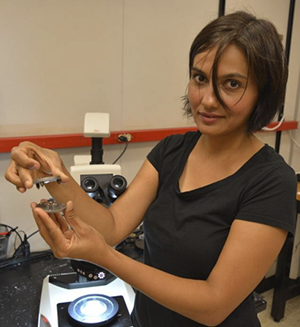 Shanti Deemyad is Associate Professor of Physics at the University of Utah, USA. After graduating from Sharif University of Technology, she received her PhD in Physics from Washington University in St Louis working in Jim Schillings group in 2004. In her doctoral thesis, Deemyad studied pressure effects on a number of superconducting materials including superconductivity of lithium under nearly hydrostatic conditions. After that, she was a post-doc at Harvard University, until 2009, working with Ike Silvera where she studied the melting curve of hydrogen. She is currently head of laboratory http://www.physics.utah.edu/~deemyad. Her lab is divided in two major areas: quantum solids and highly correlated electron systems with an emphasis on studying the nature of electronic interactions; and high pressure guided synthesis of materials with new or enhanced properties for energy storage and transport. She has been elected Chair of the Gordon Research Conference on High Pressure in 2016 and, in that role, she has been ex officio Member of the AIRAPT Executive Committee. She has been elected Member of the AIRAPT Executive Committee in 2017 and current Treasurer of AIRAPT since 2019.
Shanti Deemyad is Associate Professor of Physics at the University of Utah, USA. After graduating from Sharif University of Technology, she received her PhD in Physics from Washington University in St Louis working in Jim Schillings group in 2004. In her doctoral thesis, Deemyad studied pressure effects on a number of superconducting materials including superconductivity of lithium under nearly hydrostatic conditions. After that, she was a post-doc at Harvard University, until 2009, working with Ike Silvera where she studied the melting curve of hydrogen. She is currently head of laboratory http://www.physics.utah.edu/~deemyad. Her lab is divided in two major areas: quantum solids and highly correlated electron systems with an emphasis on studying the nature of electronic interactions; and high pressure guided synthesis of materials with new or enhanced properties for energy storage and transport. She has been elected Chair of the Gordon Research Conference on High Pressure in 2016 and, in that role, she has been ex officio Member of the AIRAPT Executive Committee. She has been elected Member of the AIRAPT Executive Committee in 2017 and current Treasurer of AIRAPT since 2019.
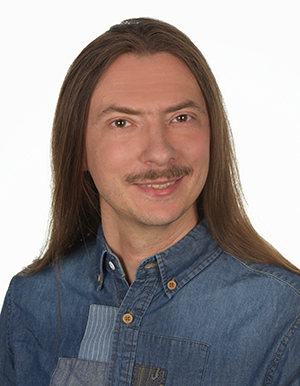 Kamil Filip Dziubek studied chemistry at Adam Mickiewicz University, Poznań, Poland, both at a graduate and postgraduate level, receiving his PhD in 2009. In 2014 he moved to the European Laboratory for Non-Linear Spectroscopy (LENS) in Florence, Italy. His interests cover high-pressure synthesis of novel functional materials from molecular organic precursors and the design and development of hybrid organic-inorganic nanocomposites. More recently he has had a focus on chemical aspects of the deep carbon cycle. In addition, Kamil is an active member of the high pressure research community (incumbent chair of the IUCr Commission on High Pressure). He also supports equality and diversity in science co-organizing Women under High Pressure ‘Power Hour’ gatherings at various conferences and workshops.
Kamil Filip Dziubek studied chemistry at Adam Mickiewicz University, Poznań, Poland, both at a graduate and postgraduate level, receiving his PhD in 2009. In 2014 he moved to the European Laboratory for Non-Linear Spectroscopy (LENS) in Florence, Italy. His interests cover high-pressure synthesis of novel functional materials from molecular organic precursors and the design and development of hybrid organic-inorganic nanocomposites. More recently he has had a focus on chemical aspects of the deep carbon cycle. In addition, Kamil is an active member of the high pressure research community (incumbent chair of the IUCr Commission on High Pressure). He also supports equality and diversity in science co-organizing Women under High Pressure ‘Power Hour’ gatherings at various conferences and workshops.
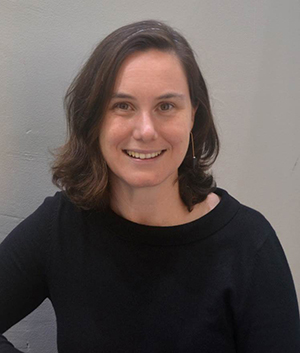 Helen Maynard-Casely is a Senior Instrument Scientist at the Australian Centre for Neutron Scattering, ANSTO. Her research interests centre about the structures of materials relevant to the dwarf planets of our solar system. Her journey to exploring these icy worlds began with her degree in Planetary Sciences from University College London, and was followed by her PhD in high-pressure physics undertaken at the University of Edinburgh. Moving to Australia first to a post-doctoral position at the Australian Synchrotron, she moved to the Australian Centre for Neutron Scattering in 2013 to work on the High Intensity Diffractometer (known as Wombat). When not working on Wombat, Helen also enjoys promoting crystallography and science to as wide an audience as possible, for example she coordinated the 2014 Crystallography365 project (https://www.iycr2014.org/learn/crystallography365), was the 2019 Australian Institute of Physics ‘Women in Physics’ Lecturer and published her first children’s book (I heart Pluto) in 2020.
Helen Maynard-Casely is a Senior Instrument Scientist at the Australian Centre for Neutron Scattering, ANSTO. Her research interests centre about the structures of materials relevant to the dwarf planets of our solar system. Her journey to exploring these icy worlds began with her degree in Planetary Sciences from University College London, and was followed by her PhD in high-pressure physics undertaken at the University of Edinburgh. Moving to Australia first to a post-doctoral position at the Australian Synchrotron, she moved to the Australian Centre for Neutron Scattering in 2013 to work on the High Intensity Diffractometer (known as Wombat). When not working on Wombat, Helen also enjoys promoting crystallography and science to as wide an audience as possible, for example she coordinated the 2014 Crystallography365 project (https://www.iycr2014.org/learn/crystallography365), was the 2019 Australian Institute of Physics ‘Women in Physics’ Lecturer and published her first children’s book (I heart Pluto) in 2020.
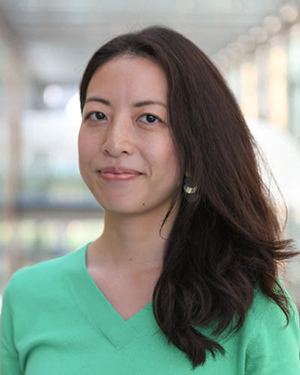 Nozomi Ando is an Associate Professor of Chemistry and Chemical Biology at Cornell. She received her BS from MIT and her PhD from Cornell, both in physics. As part of her graduate work, she developed high-pressure small-angle X-ray scattering at the Cornell High Energy Synchrotron Source (CHESS). As a postdoctoral fellow at MIT, she demonstrated how X-ray scattering can be deconvoluted to reveal insight into dynamic enzymes. She began her independent career in 2014 at Princeton and moved her lab to Cornell in 2018. The Ando Lab develops new tools in structural biology to understand the molecular mechanisms of protein allostery. Most recently, her group developed accurate methods to process and interpret diffuse scattering from protein crystals.
Nozomi Ando is an Associate Professor of Chemistry and Chemical Biology at Cornell. She received her BS from MIT and her PhD from Cornell, both in physics. As part of her graduate work, she developed high-pressure small-angle X-ray scattering at the Cornell High Energy Synchrotron Source (CHESS). As a postdoctoral fellow at MIT, she demonstrated how X-ray scattering can be deconvoluted to reveal insight into dynamic enzymes. She began her independent career in 2014 at Princeton and moved her lab to Cornell in 2018. The Ando Lab develops new tools in structural biology to understand the molecular mechanisms of protein allostery. Most recently, her group developed accurate methods to process and interpret diffuse scattering from protein crystals.
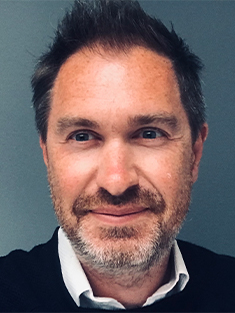 Andrew Goodwin is Professor of Materials Chemistry and a University Research Professor at Oxford. He studied at the Universities of Sydney and Cambridge before moving to Oxford in 2009 to join its Chemistry Faculty. His particular research interest is in the dual roles of disorder and flexibility in functional materials, including metal–organic frameworks, hybrid perovskites, battery materials, frustrated magnets, and oxide ceramics. Andrew's group specialises in the use and development of diffuse scattering measurements – neutron and X-ray, powder and single-crystal. In addition to his research programme, Andrew also plays an active role in oversight and beamline development at both Diamond and ISIS - the UK's X-ray synchrotron and neutron spallation sources.
Andrew Goodwin is Professor of Materials Chemistry and a University Research Professor at Oxford. He studied at the Universities of Sydney and Cambridge before moving to Oxford in 2009 to join its Chemistry Faculty. His particular research interest is in the dual roles of disorder and flexibility in functional materials, including metal–organic frameworks, hybrid perovskites, battery materials, frustrated magnets, and oxide ceramics. Andrew's group specialises in the use and development of diffuse scattering measurements – neutron and X-ray, powder and single-crystal. In addition to his research programme, Andrew also plays an active role in oversight and beamline development at both Diamond and ISIS - the UK's X-ray synchrotron and neutron spallation sources.